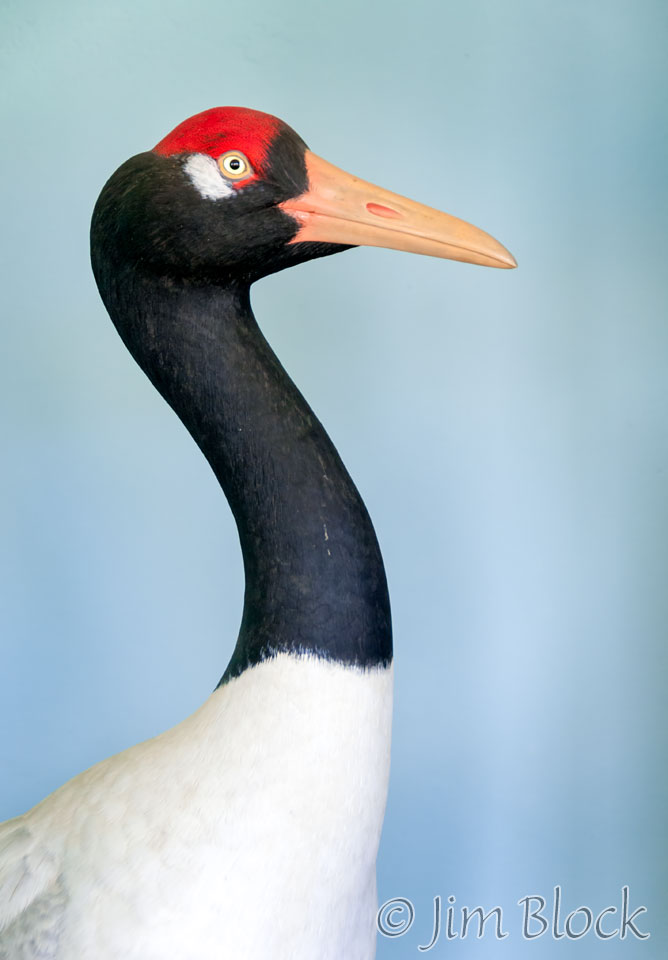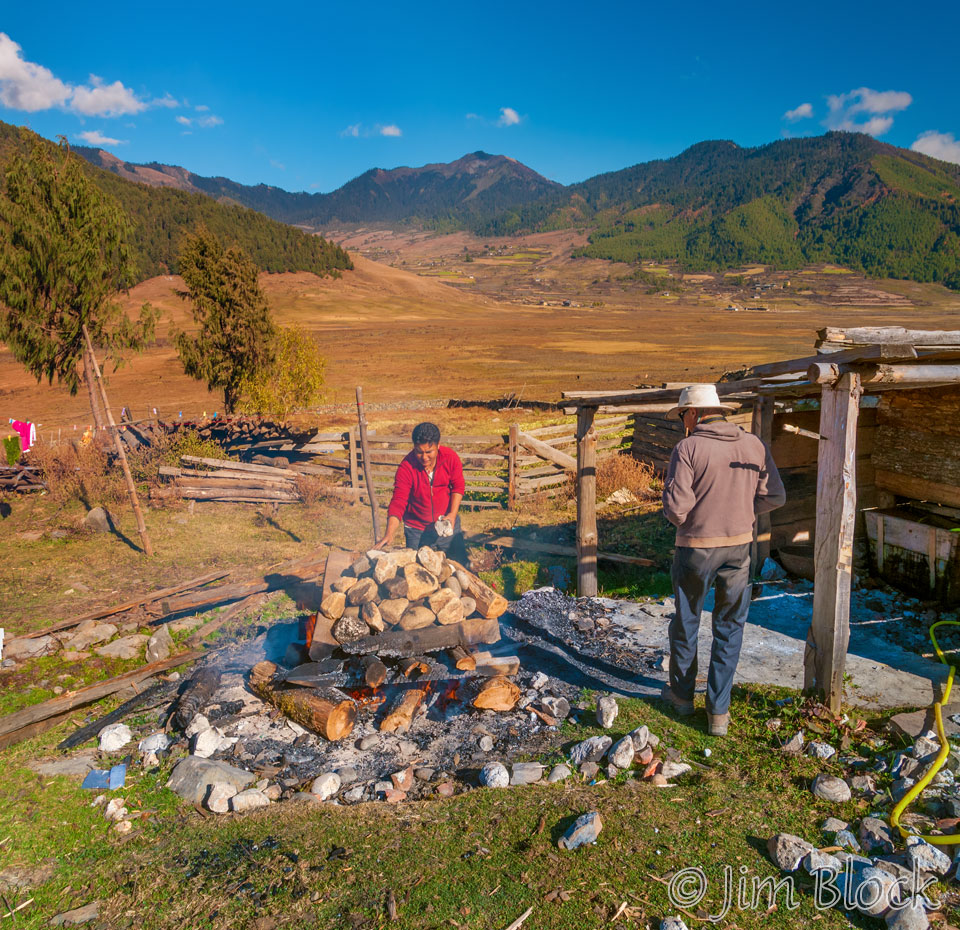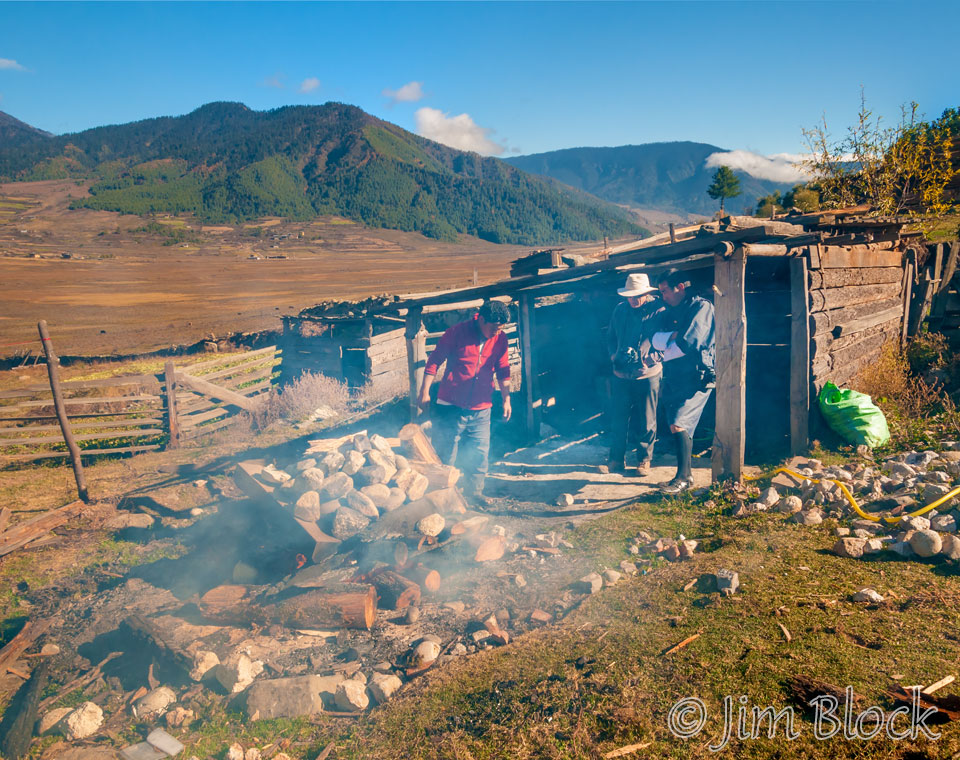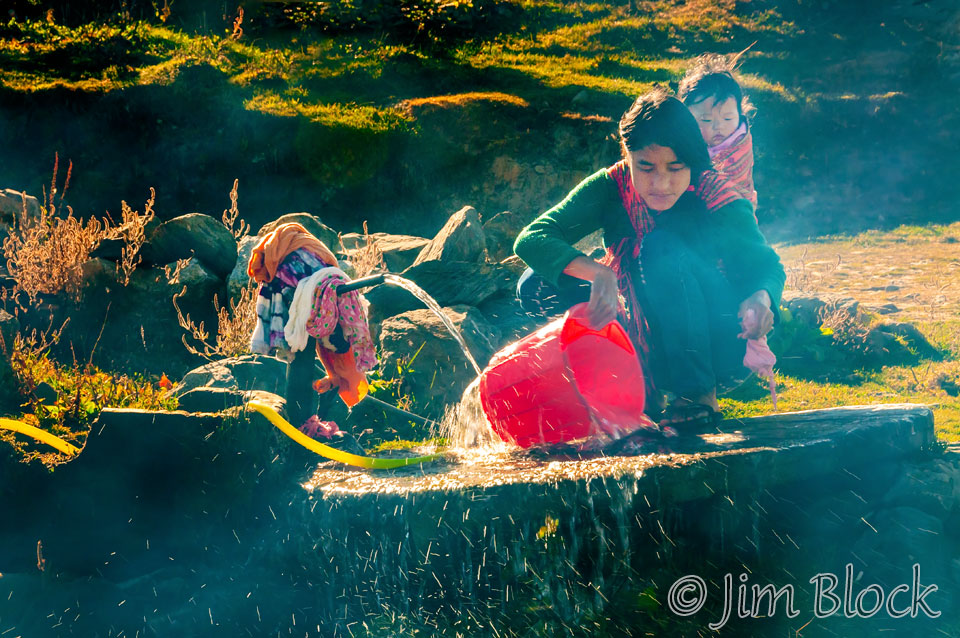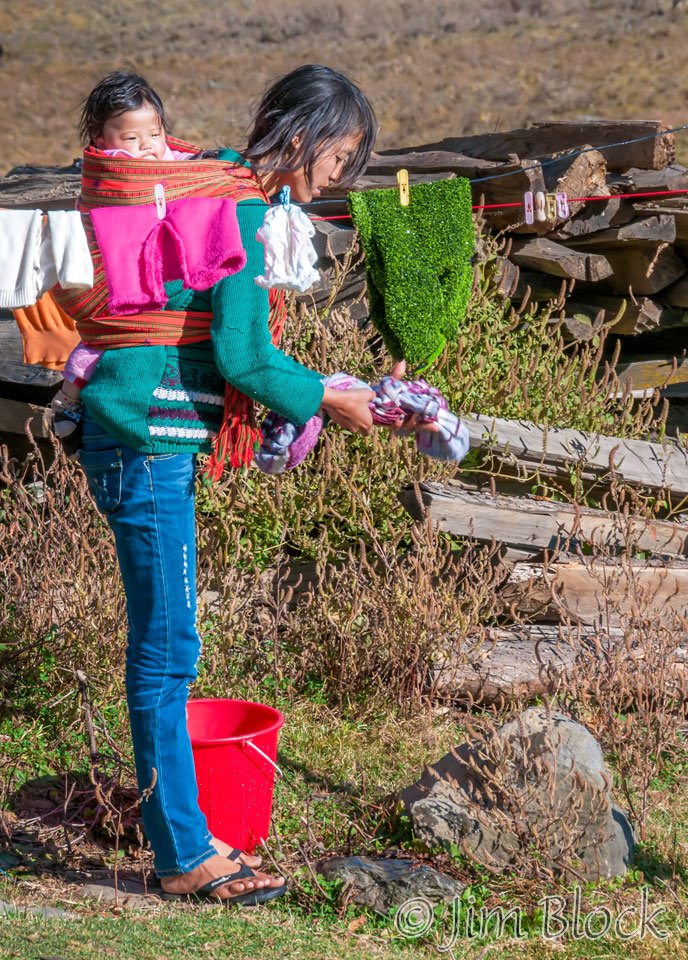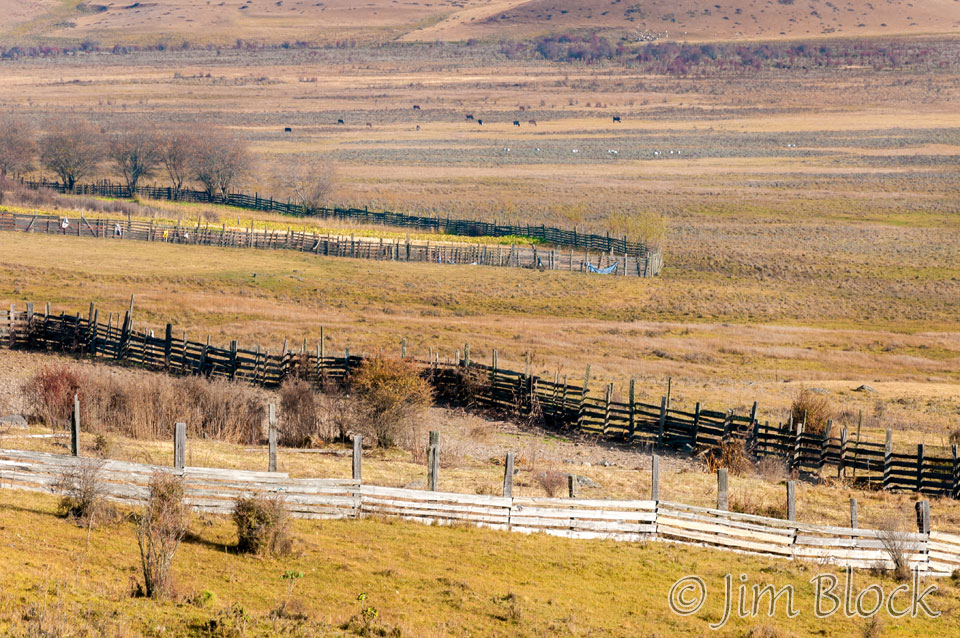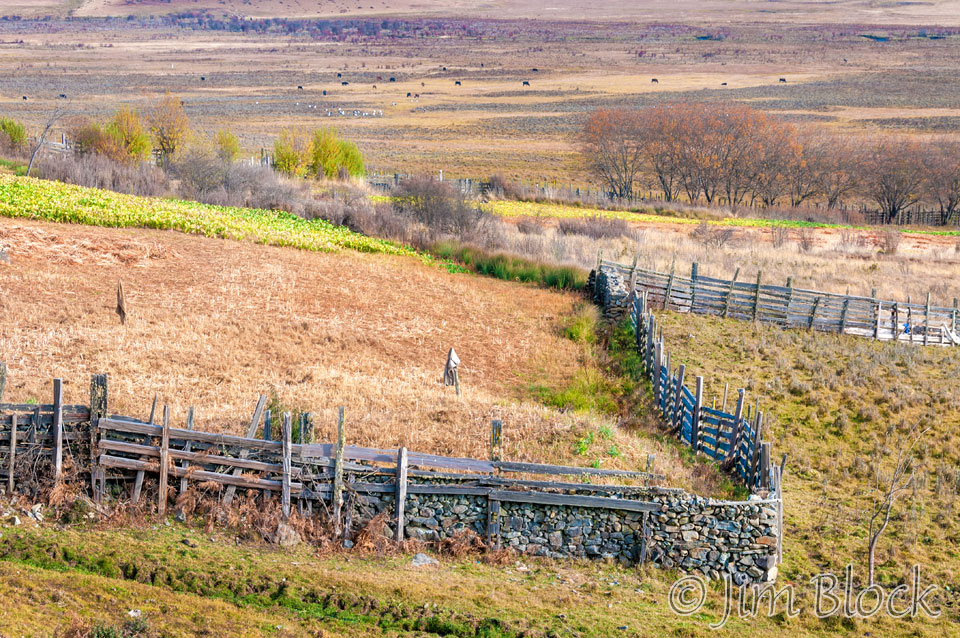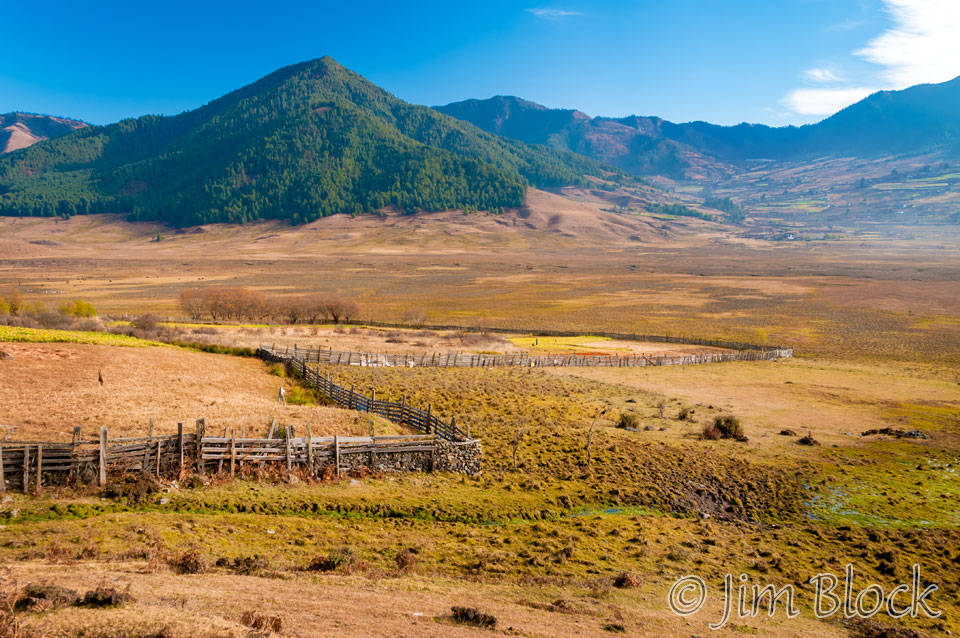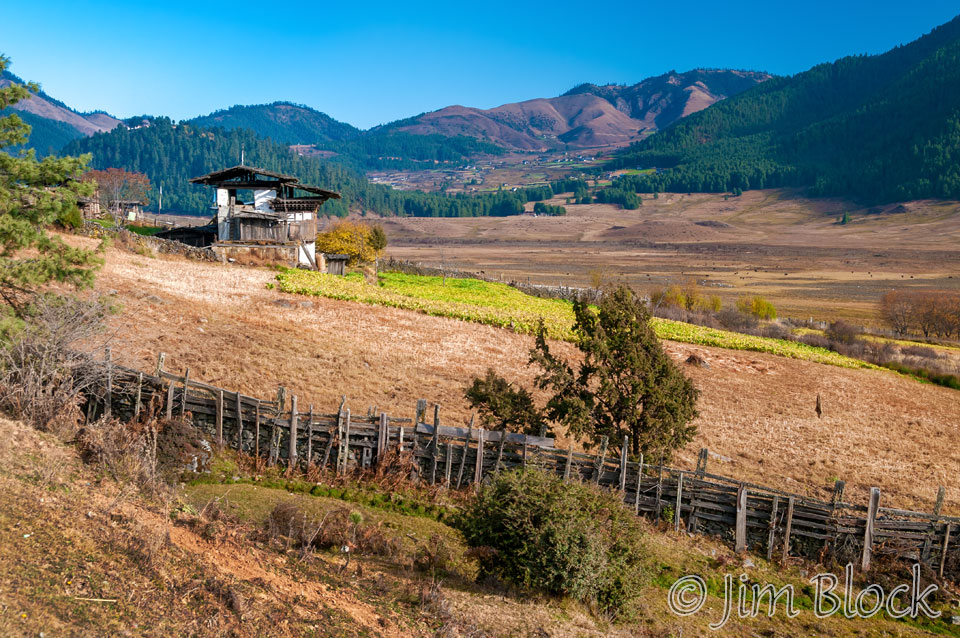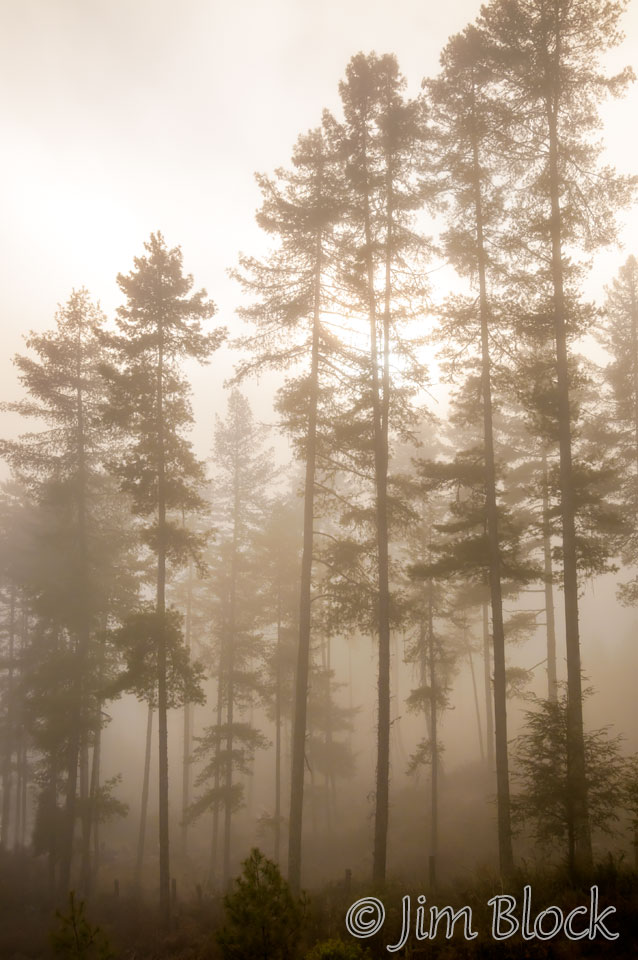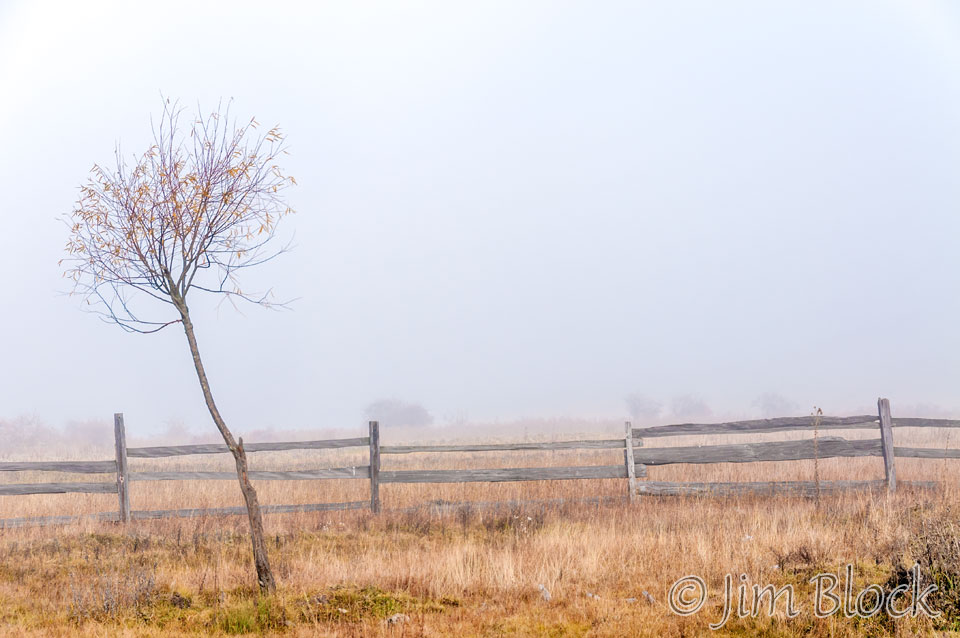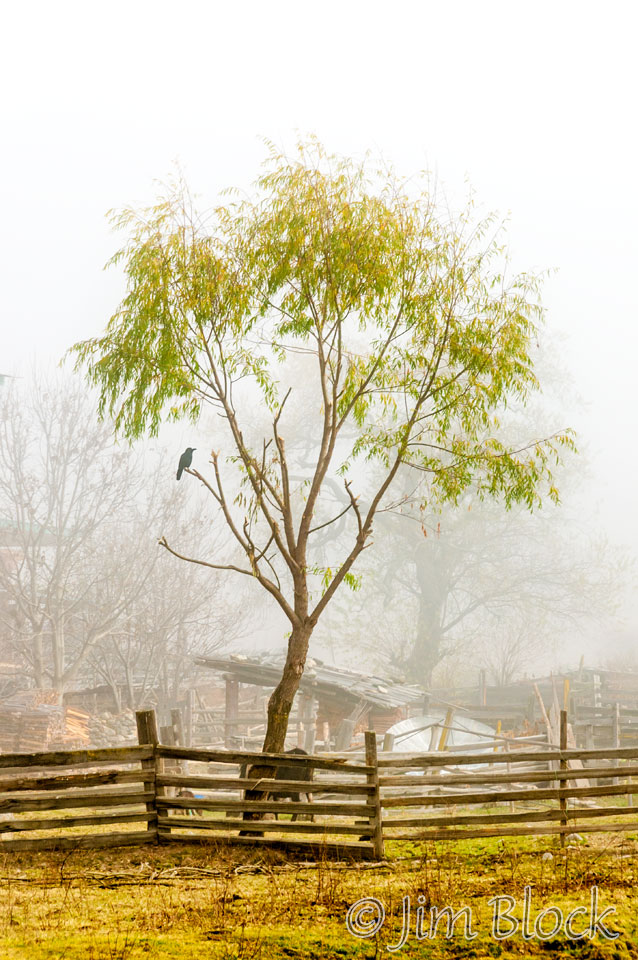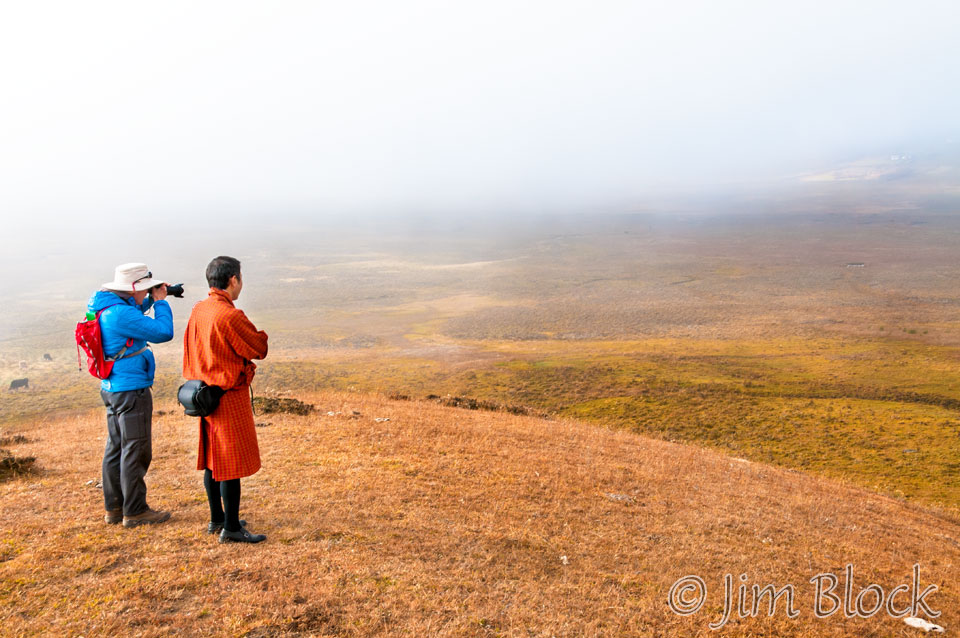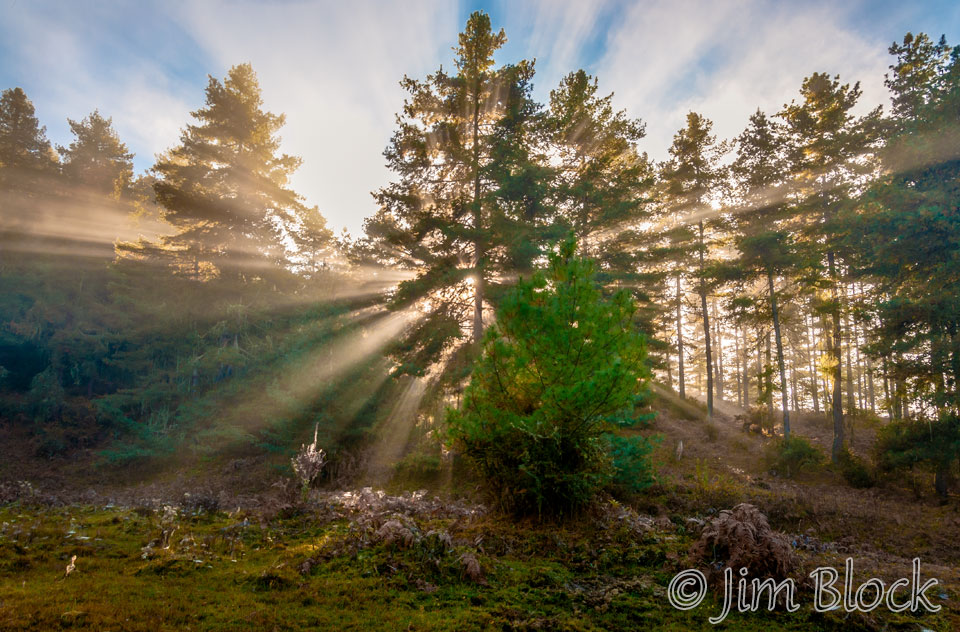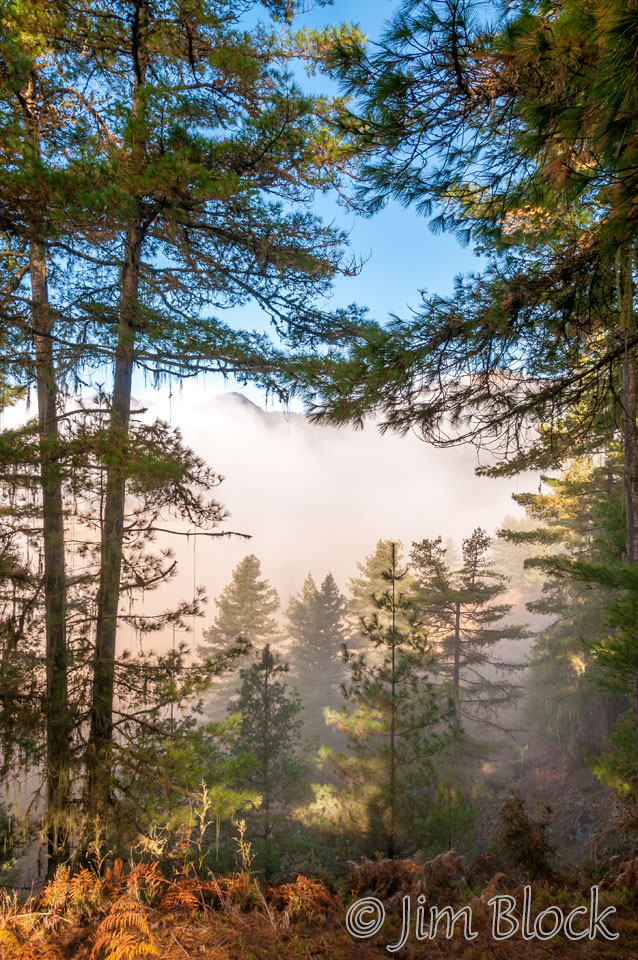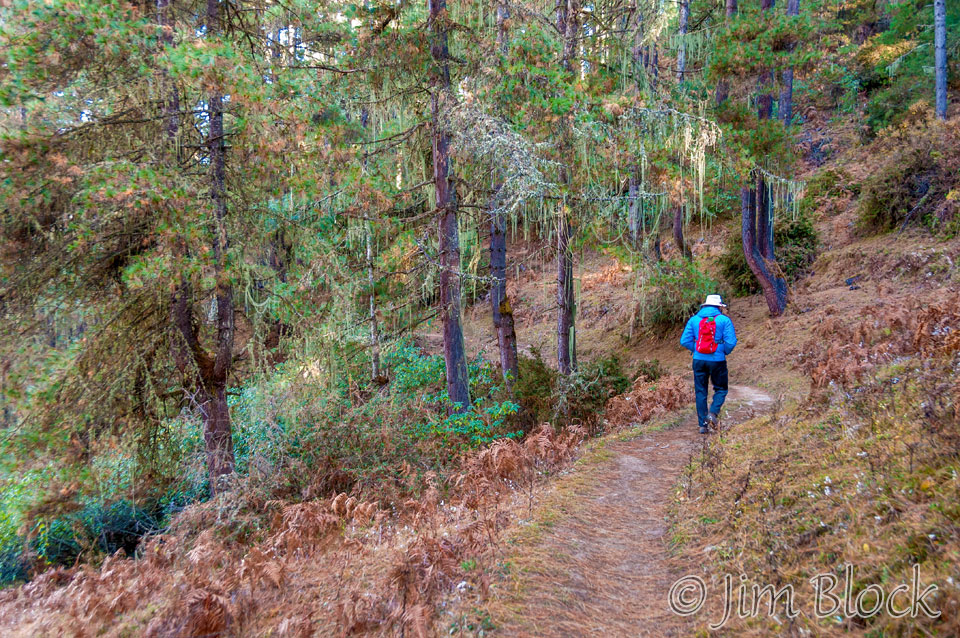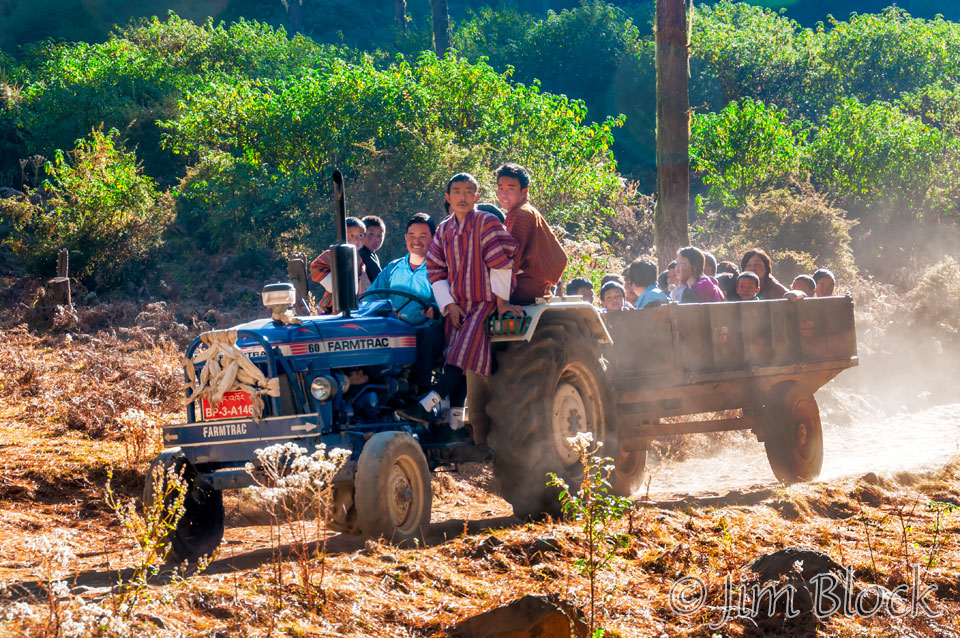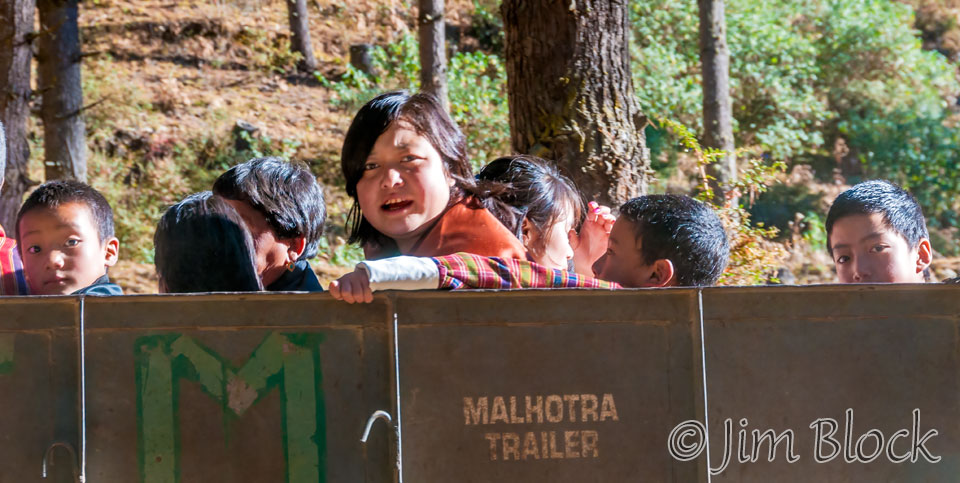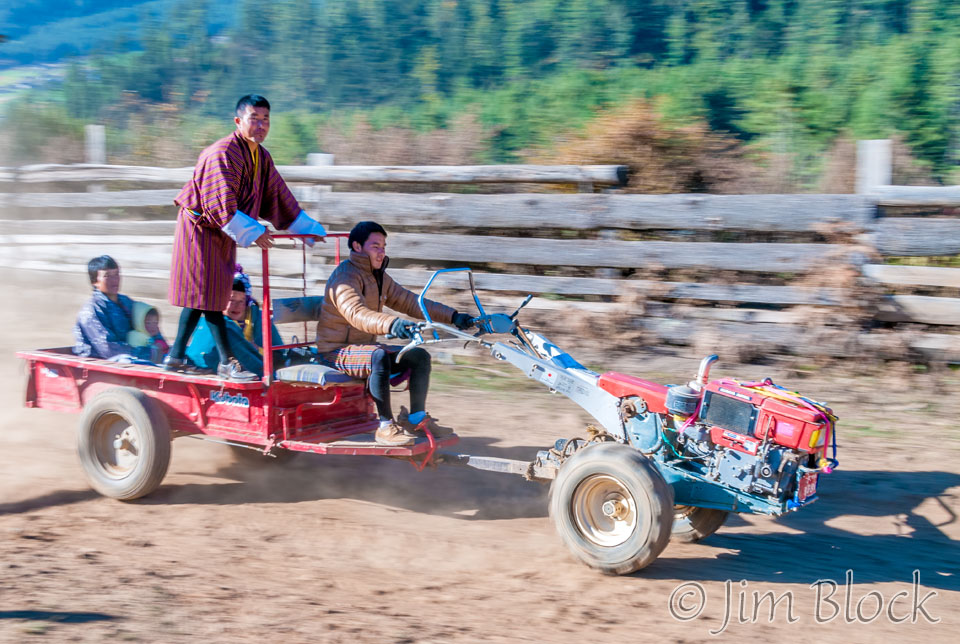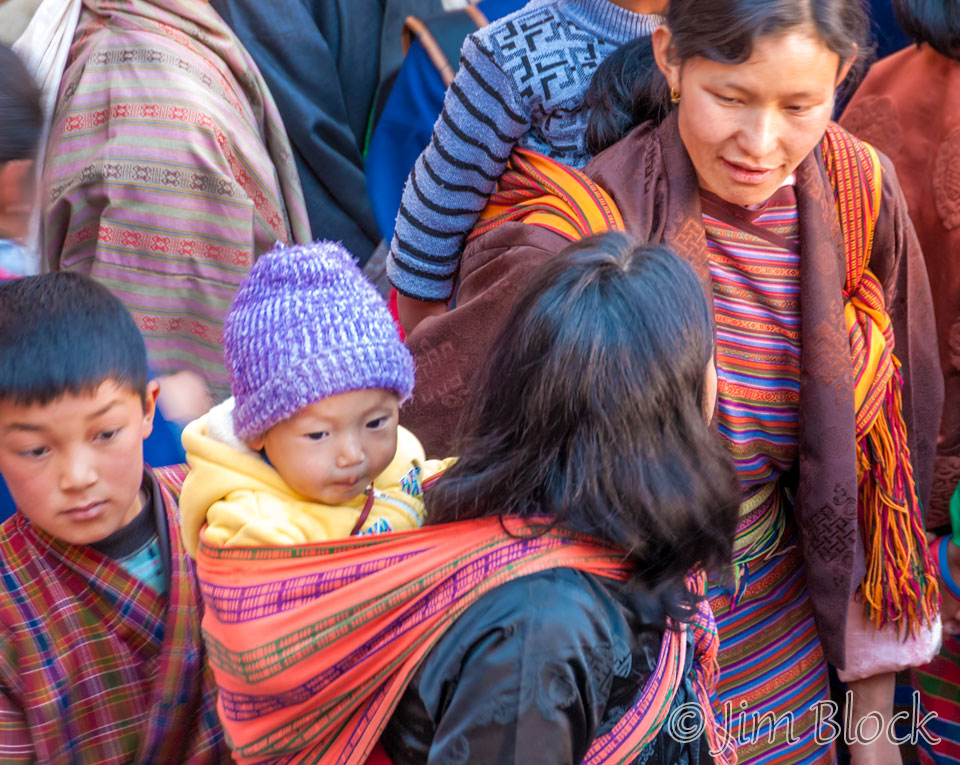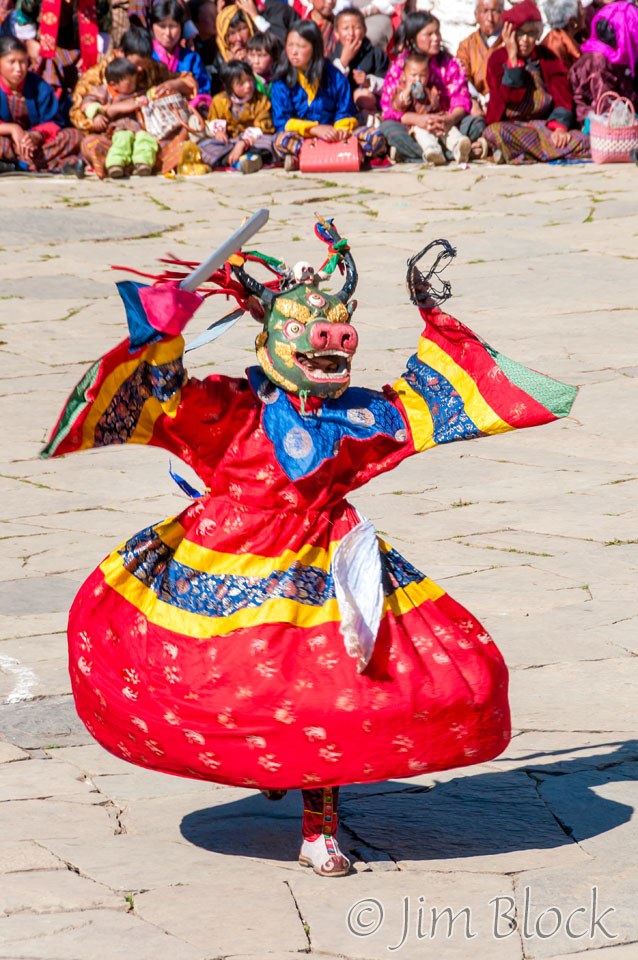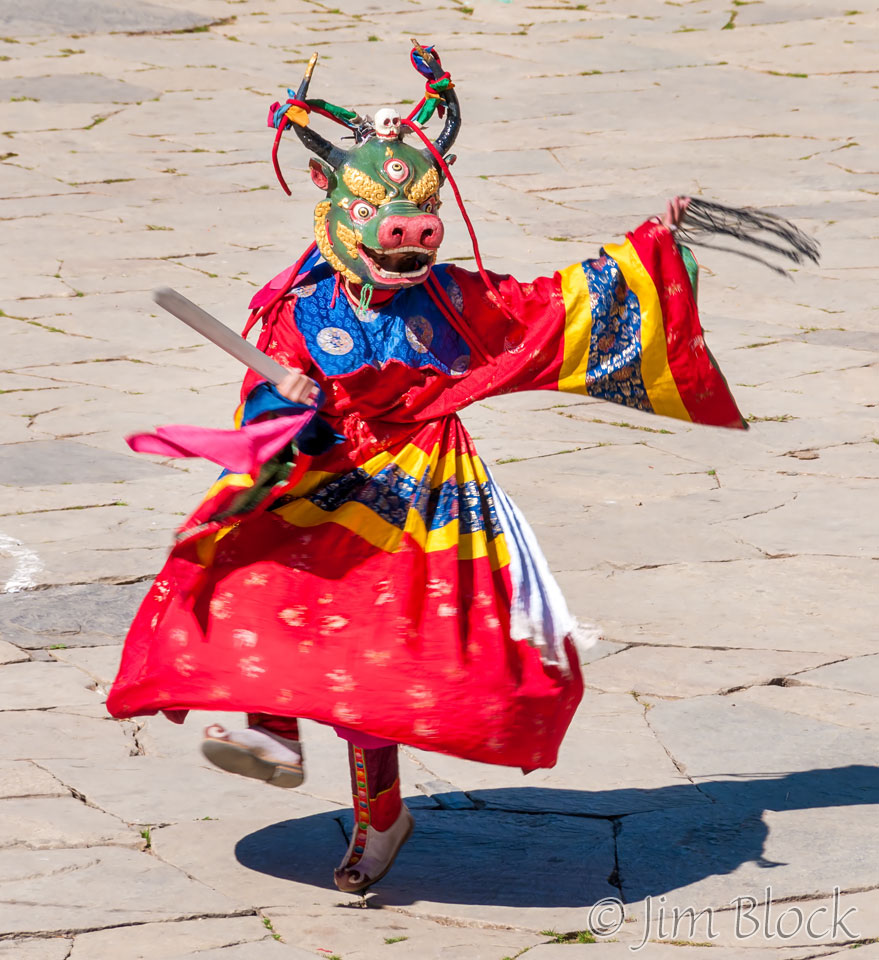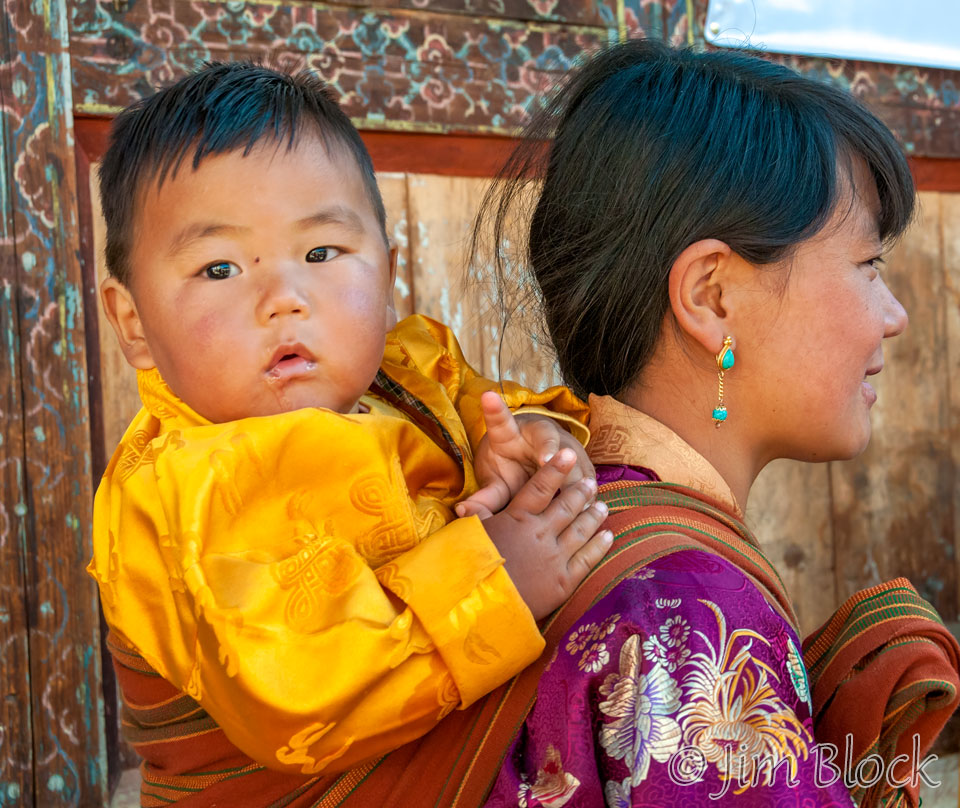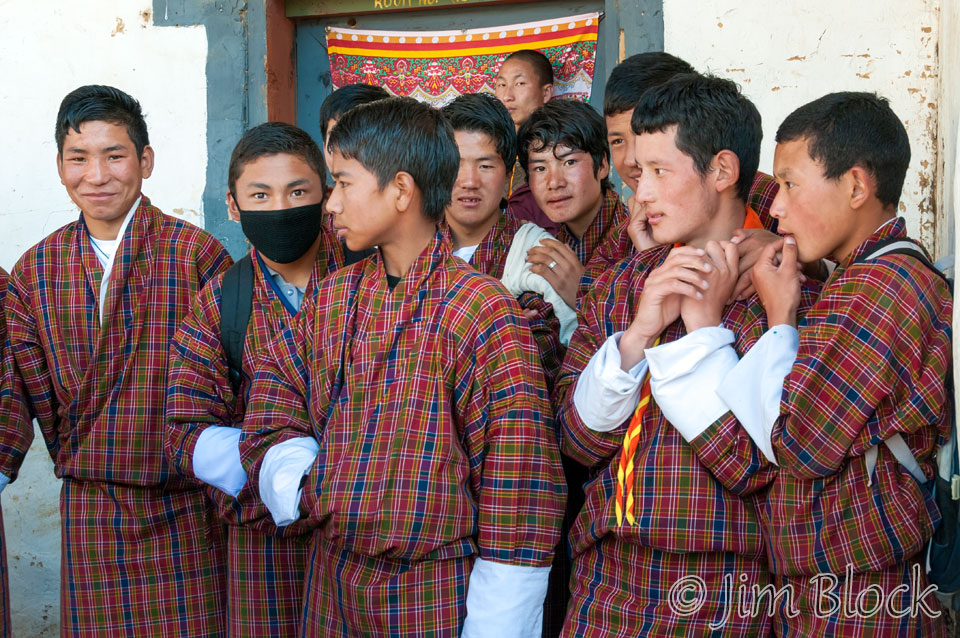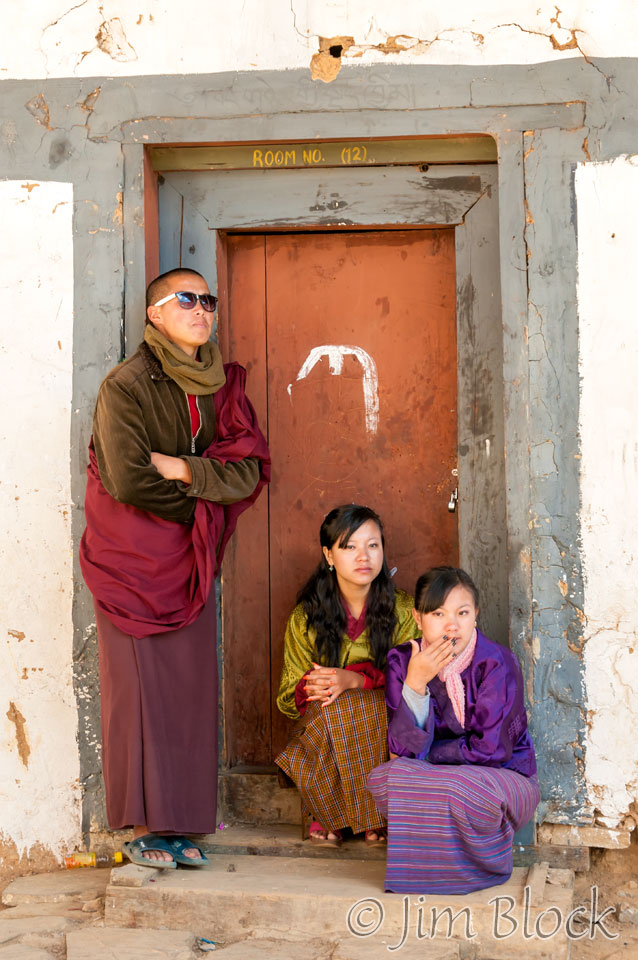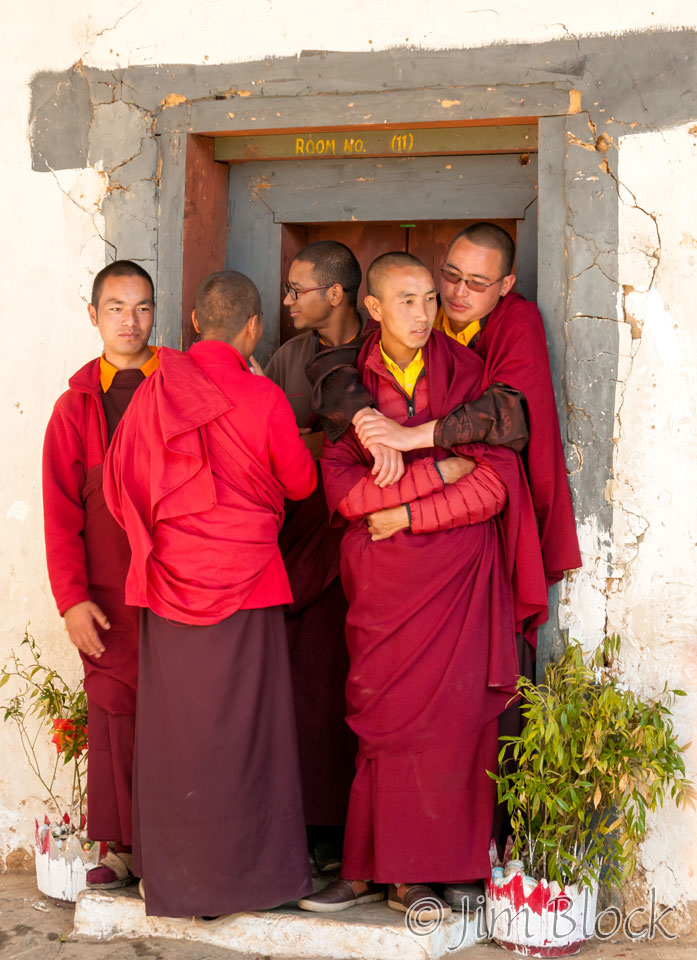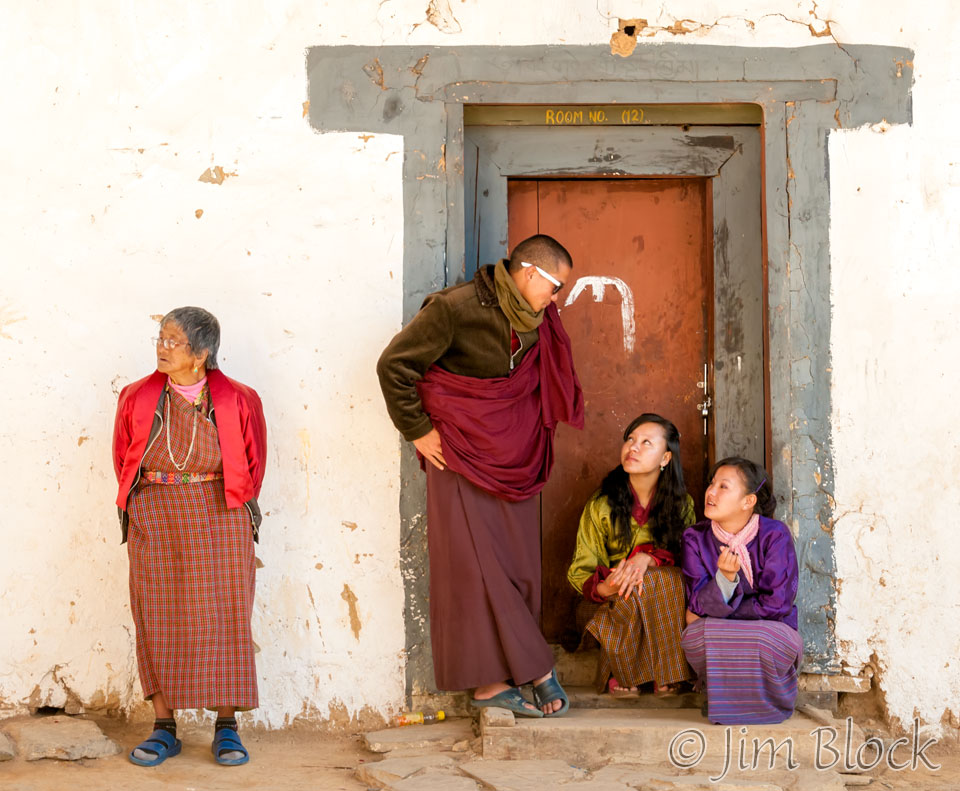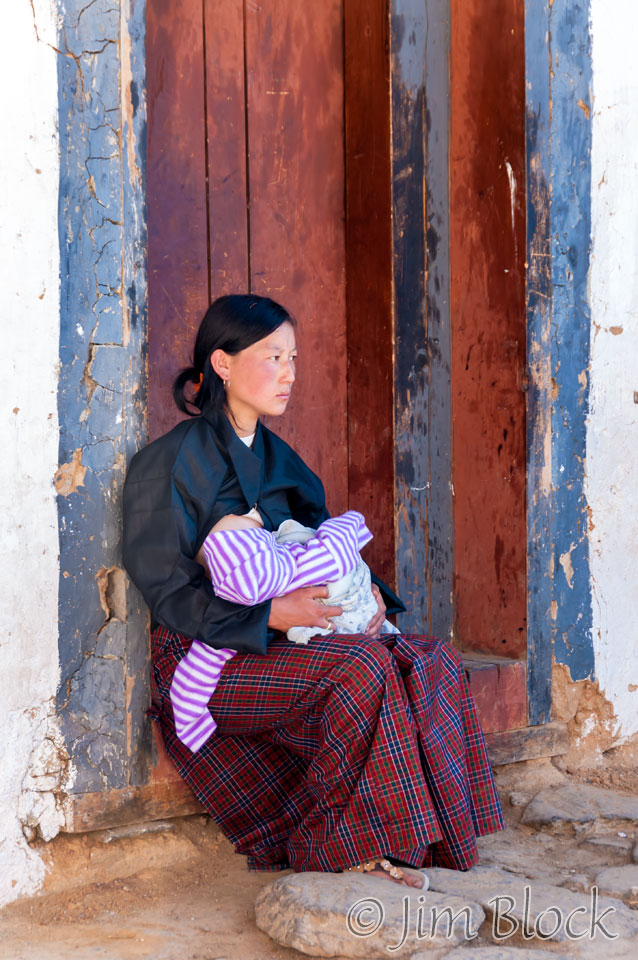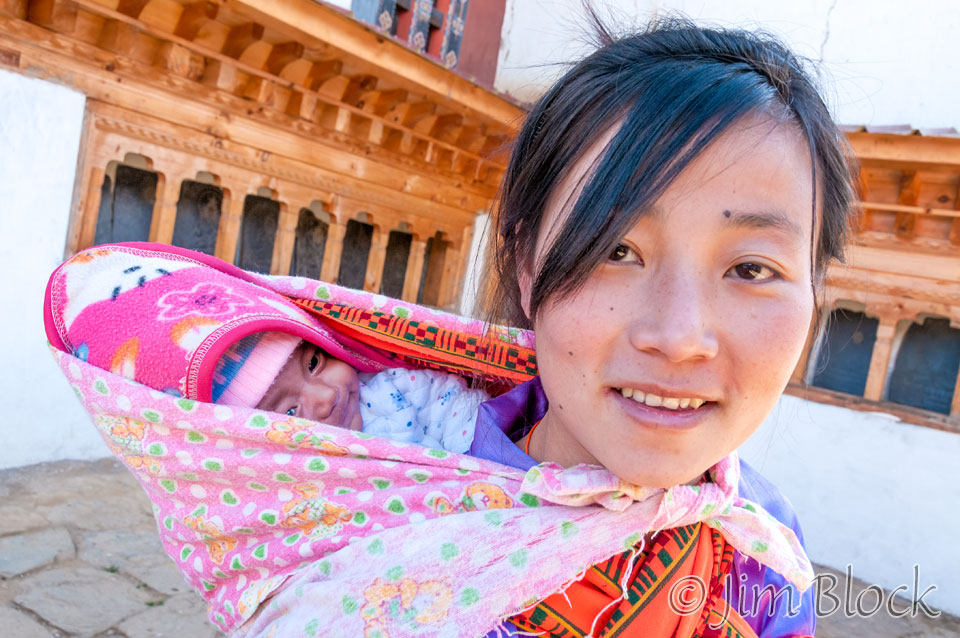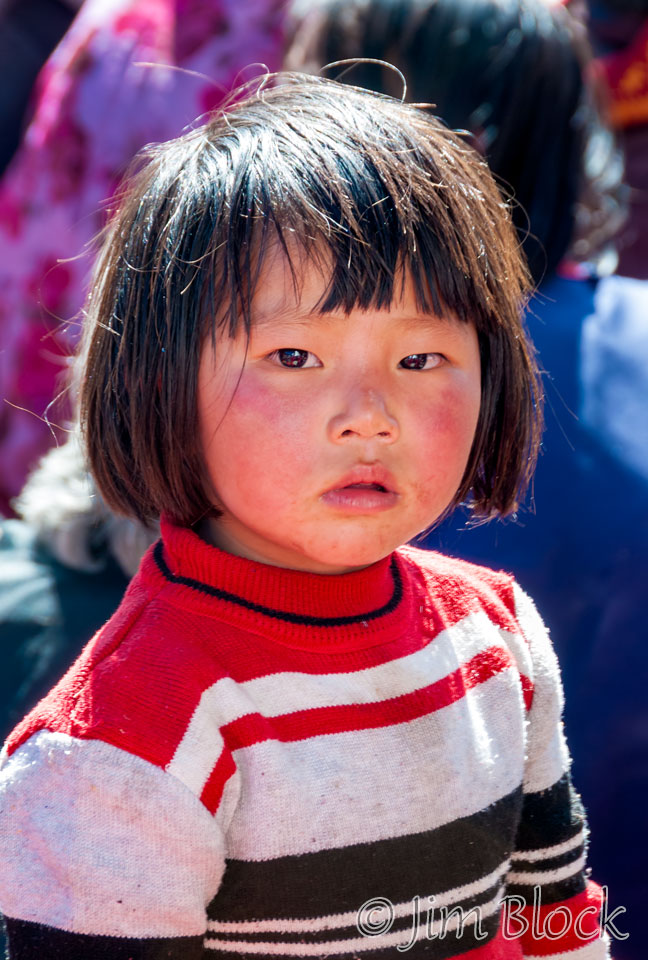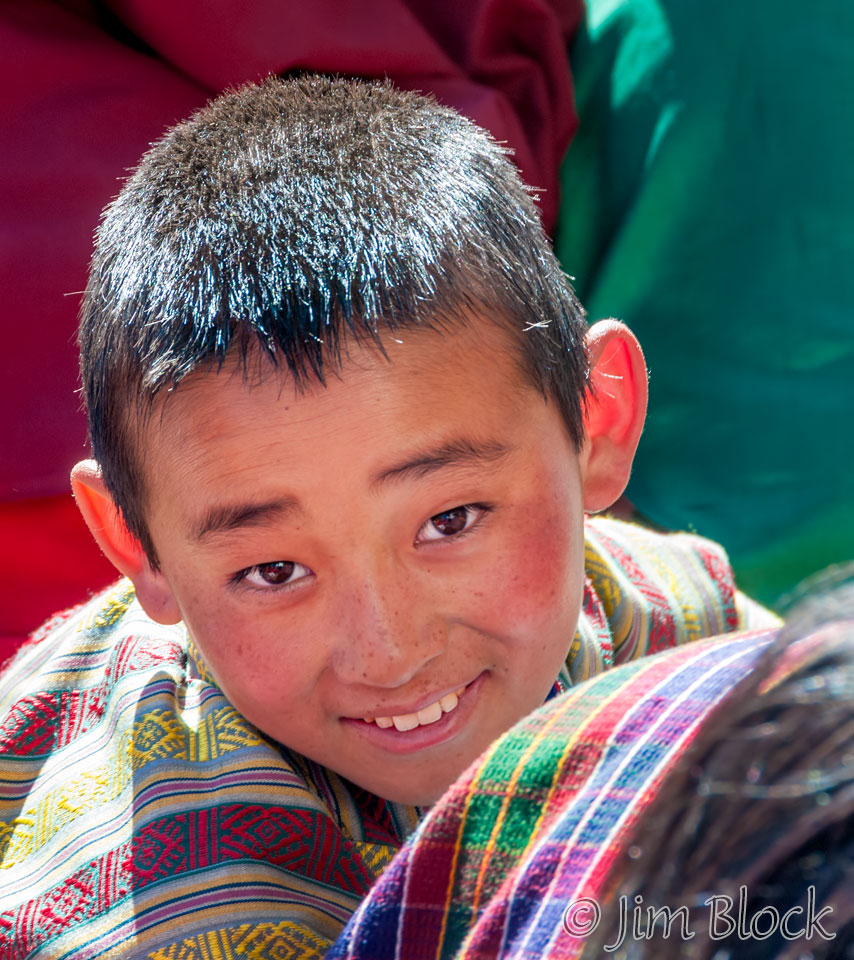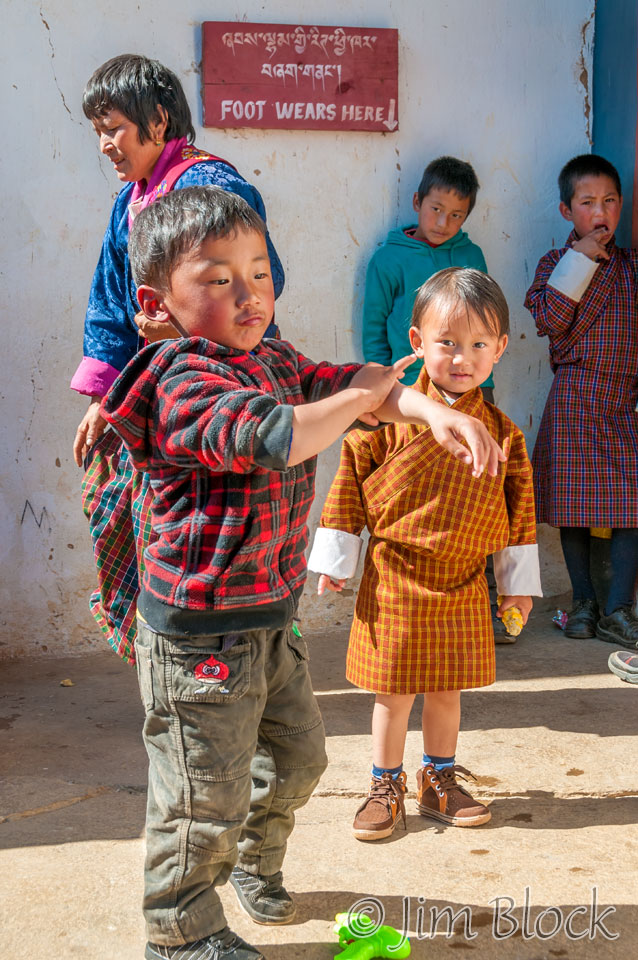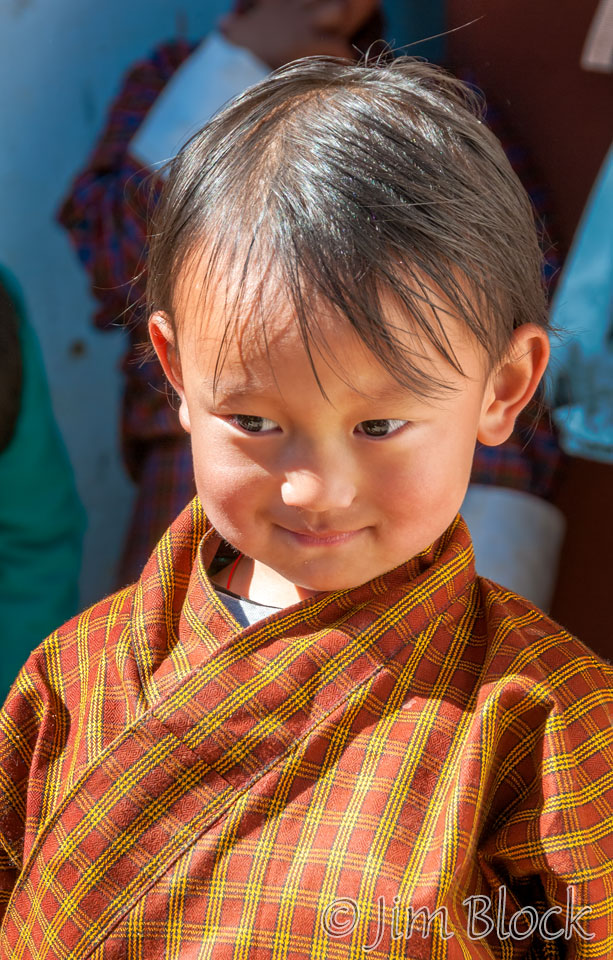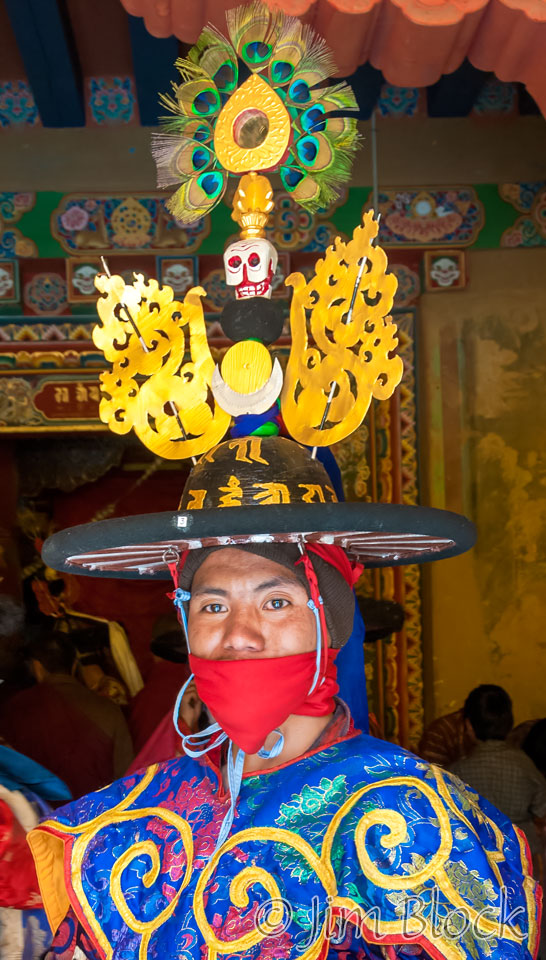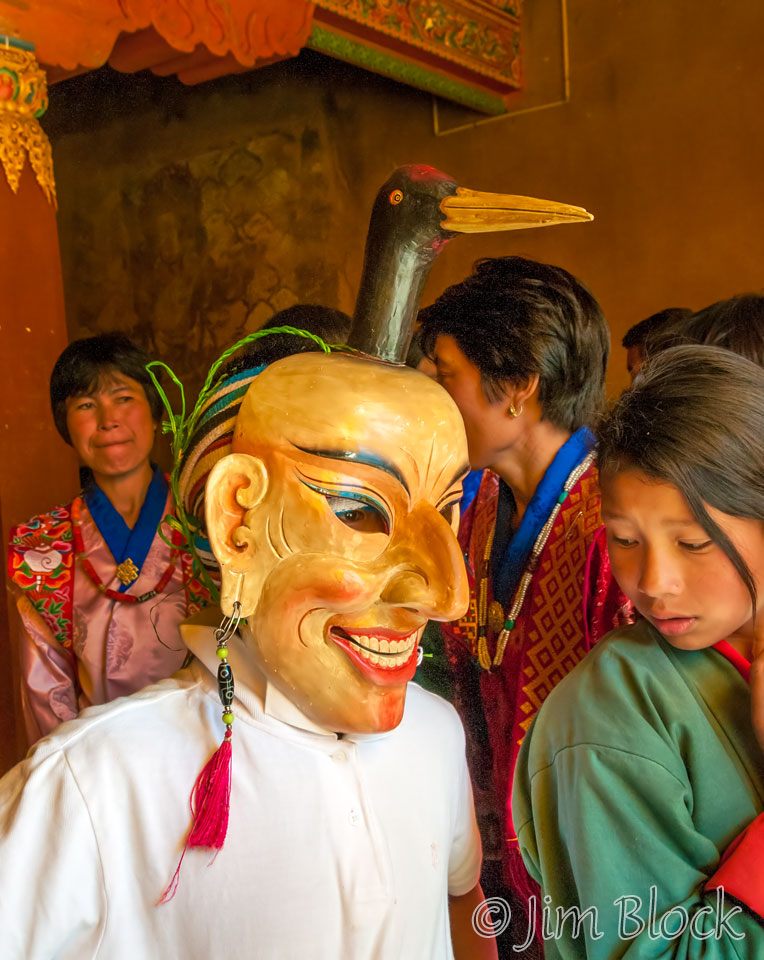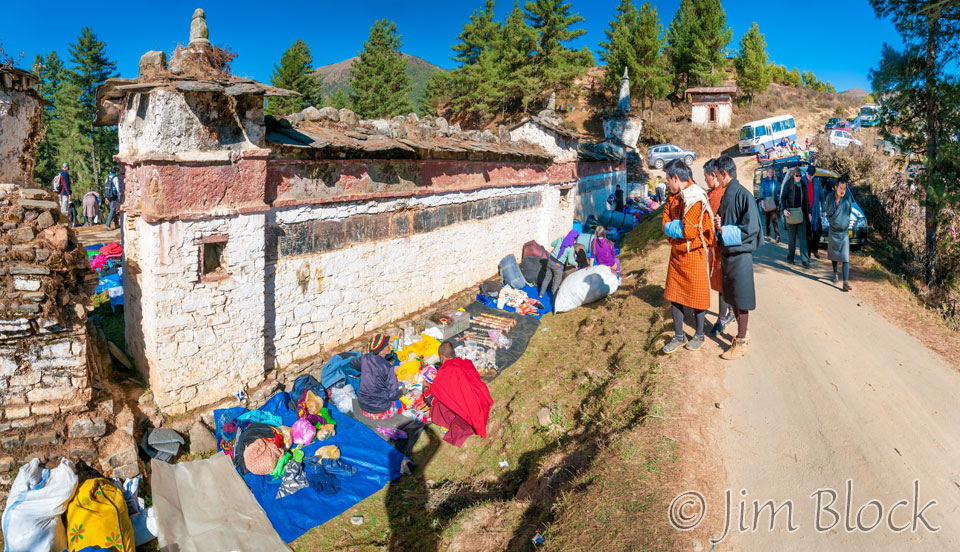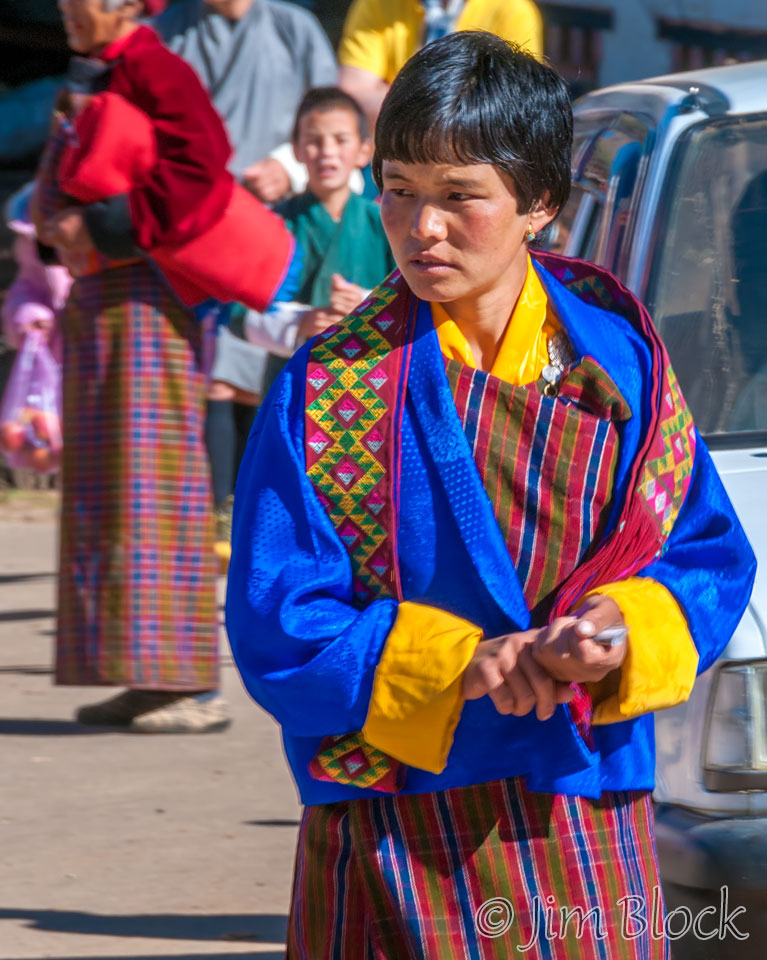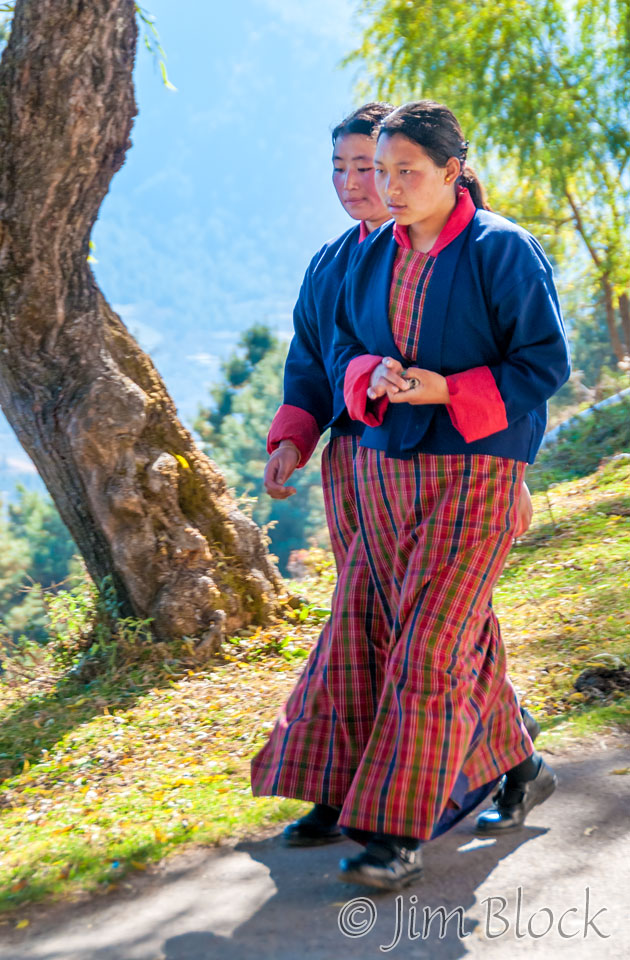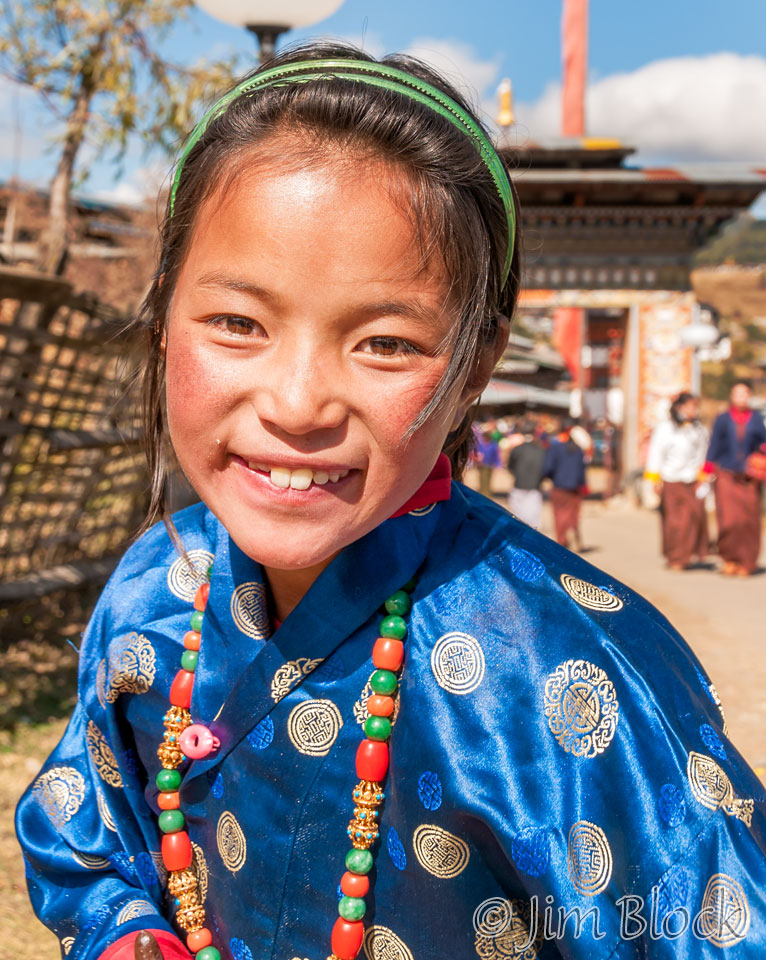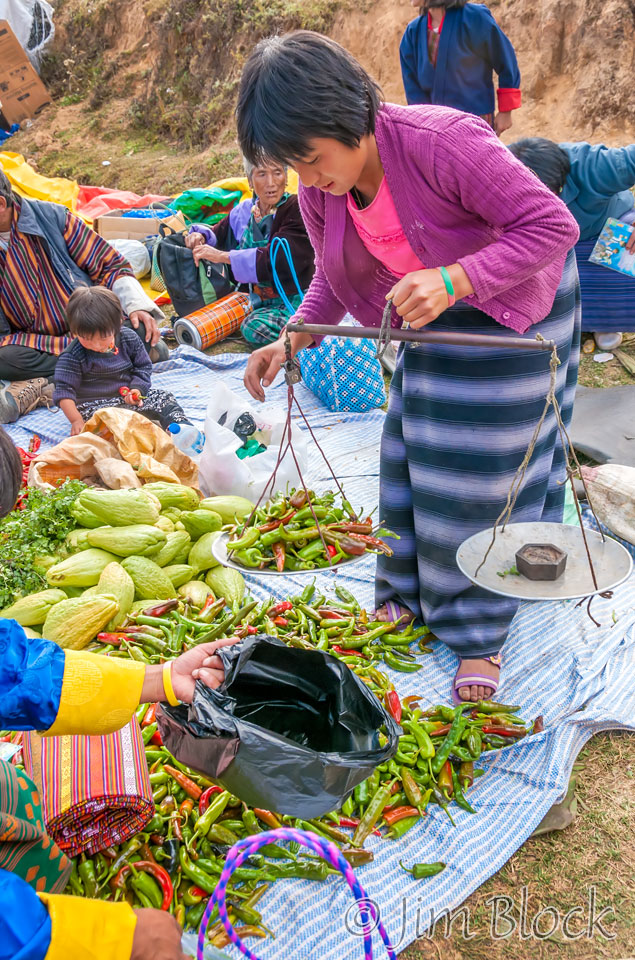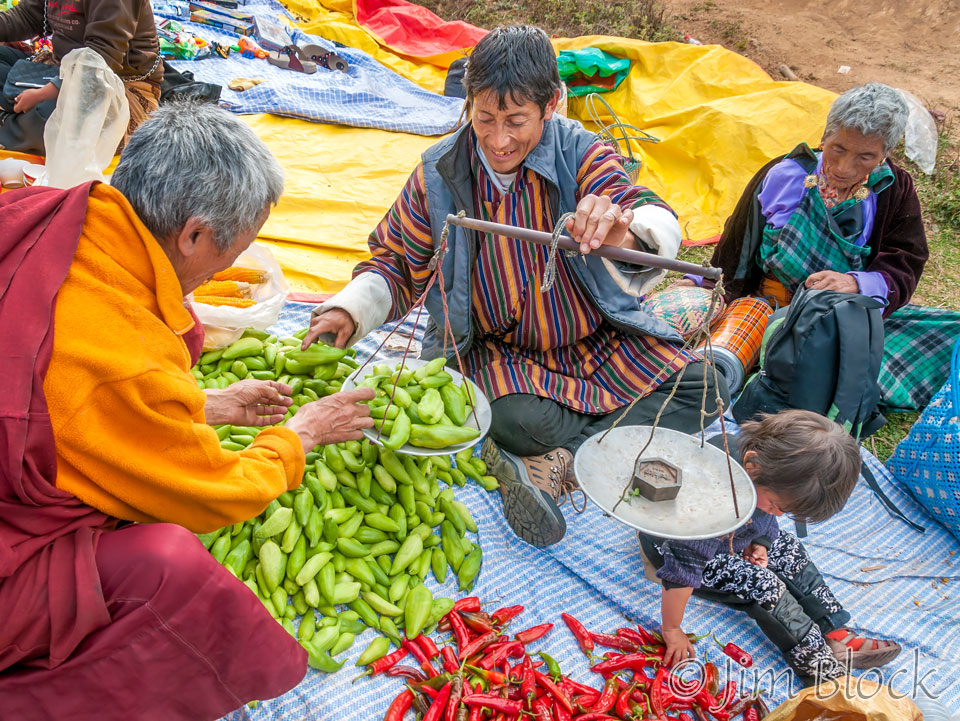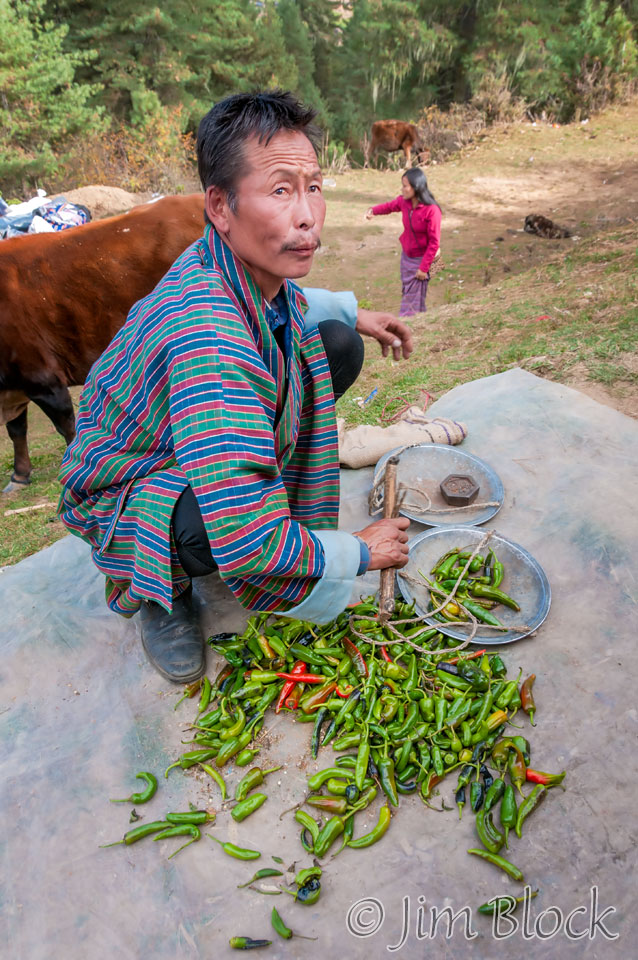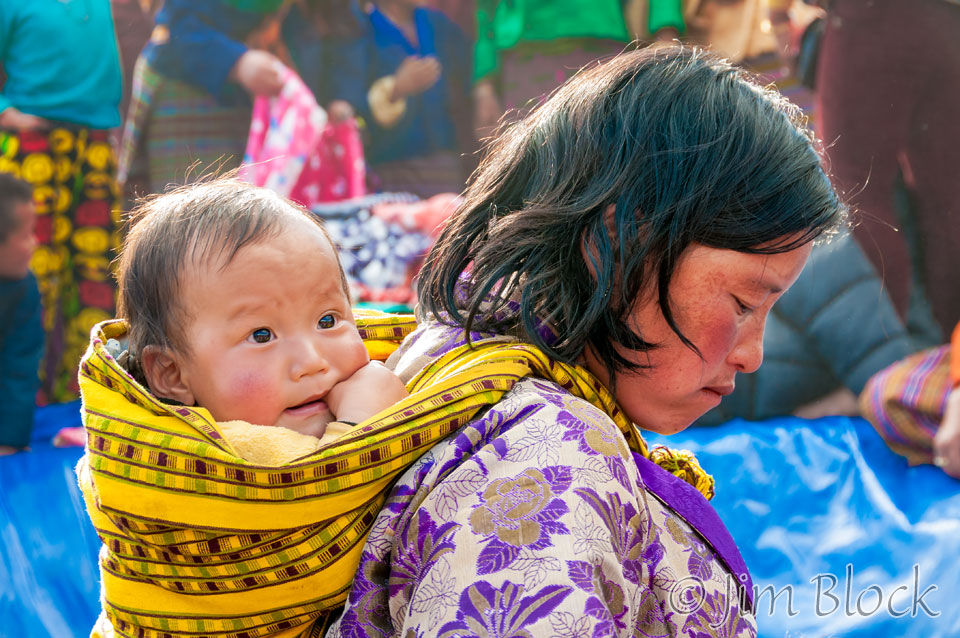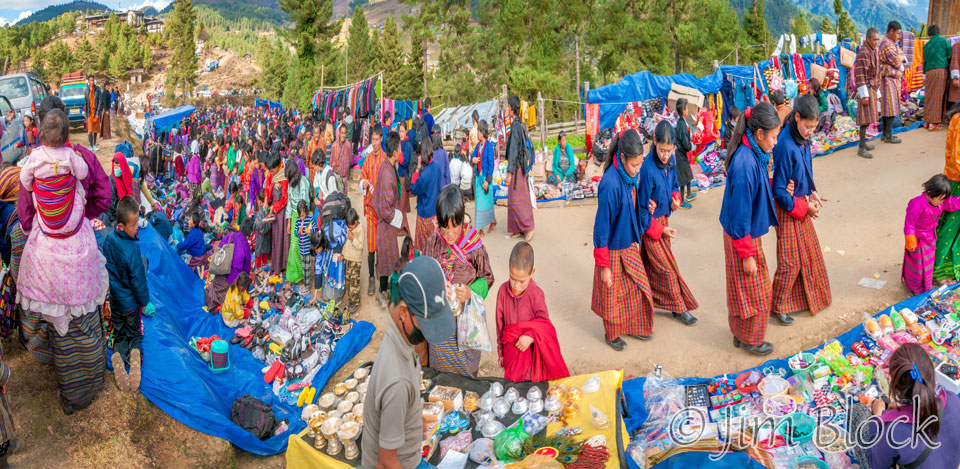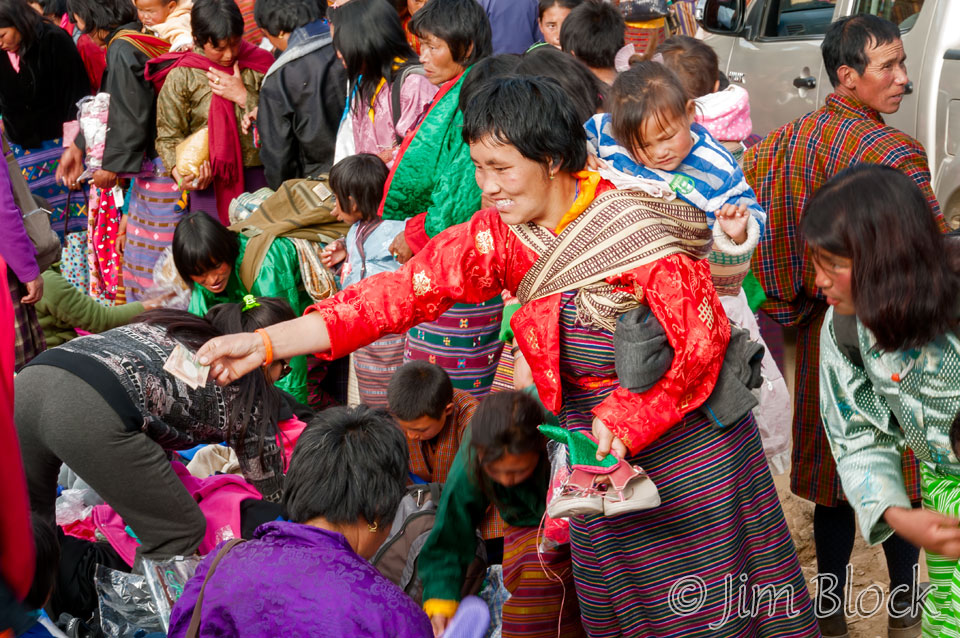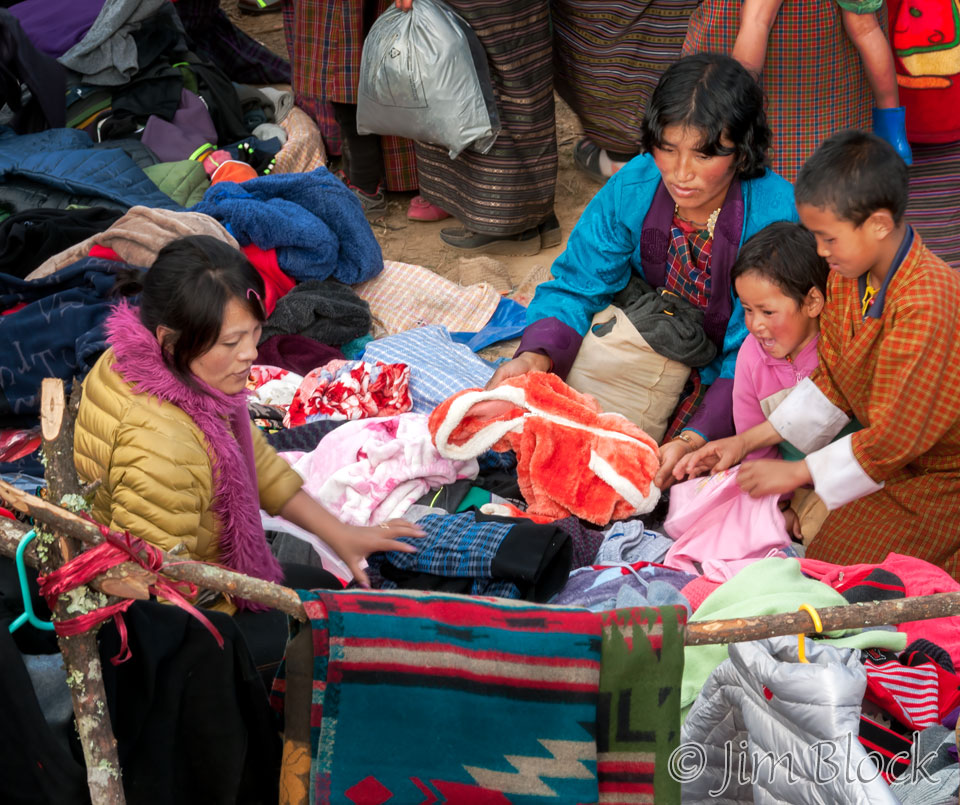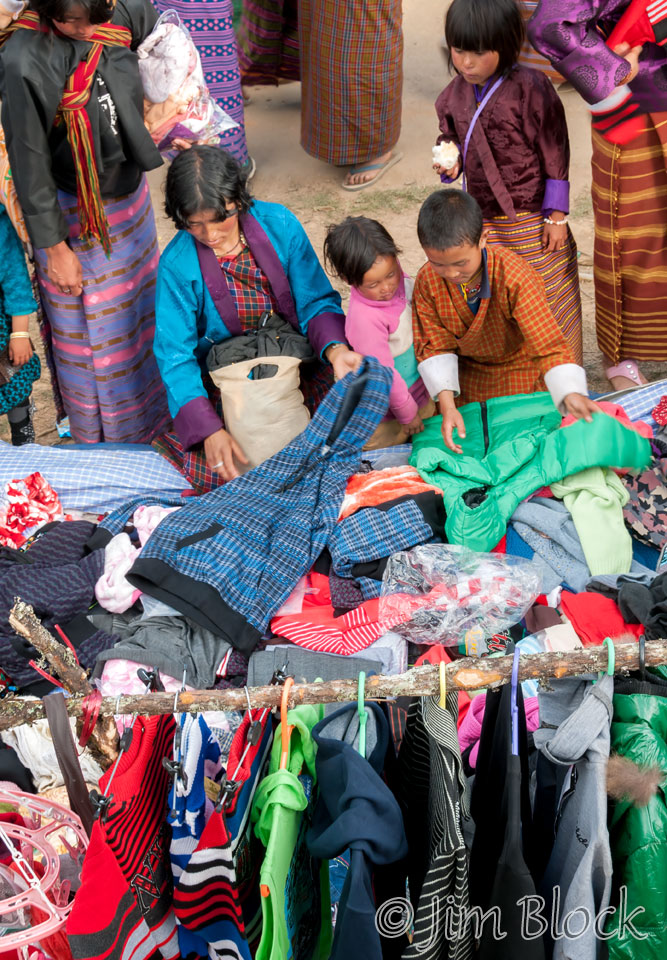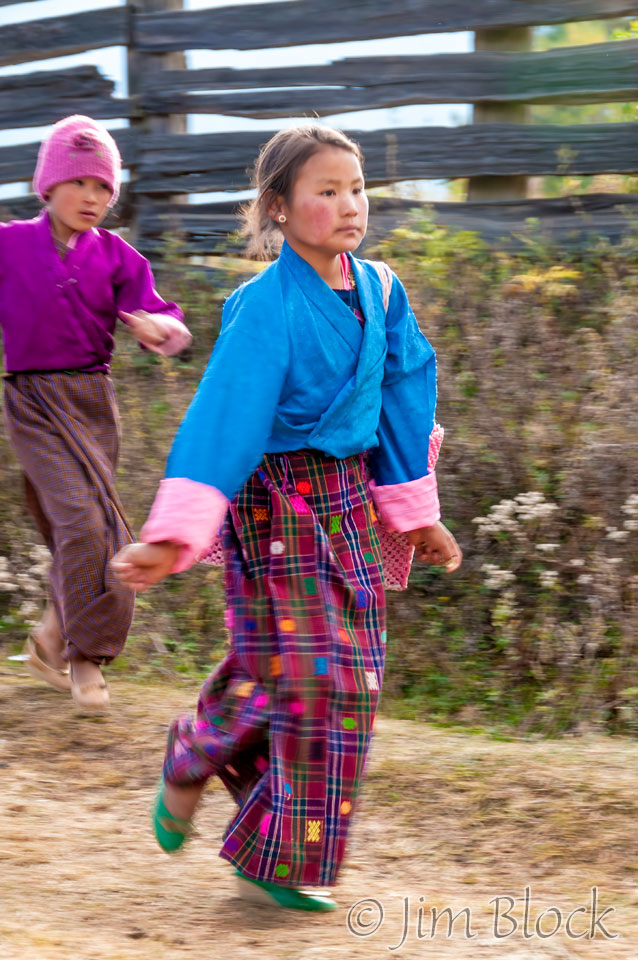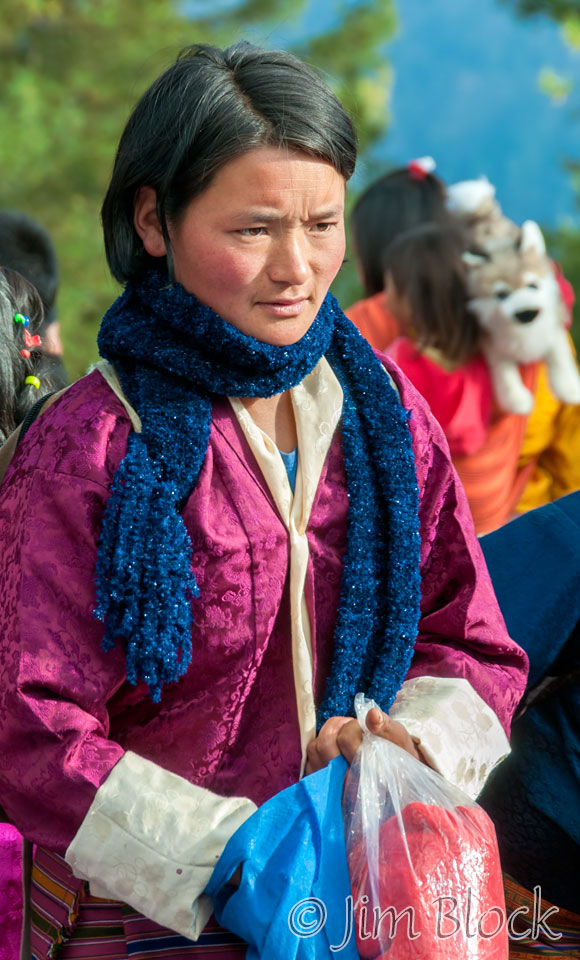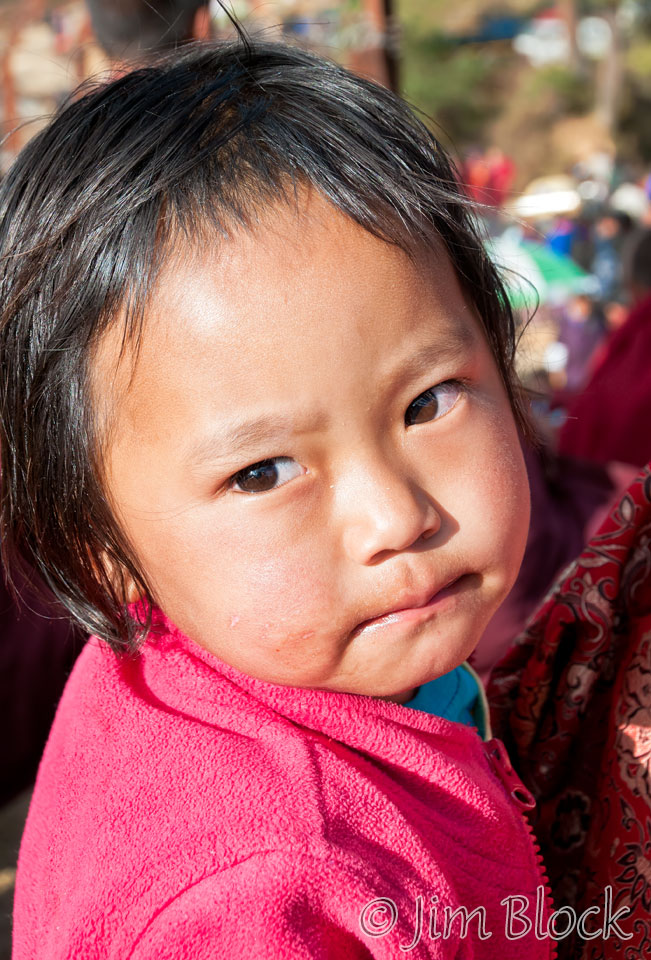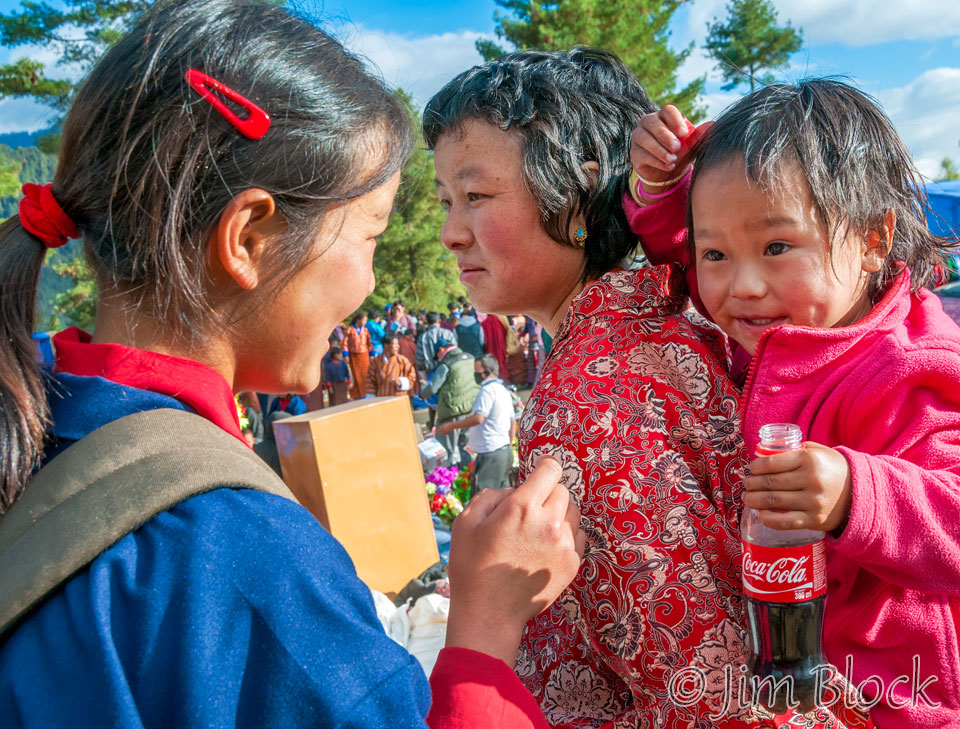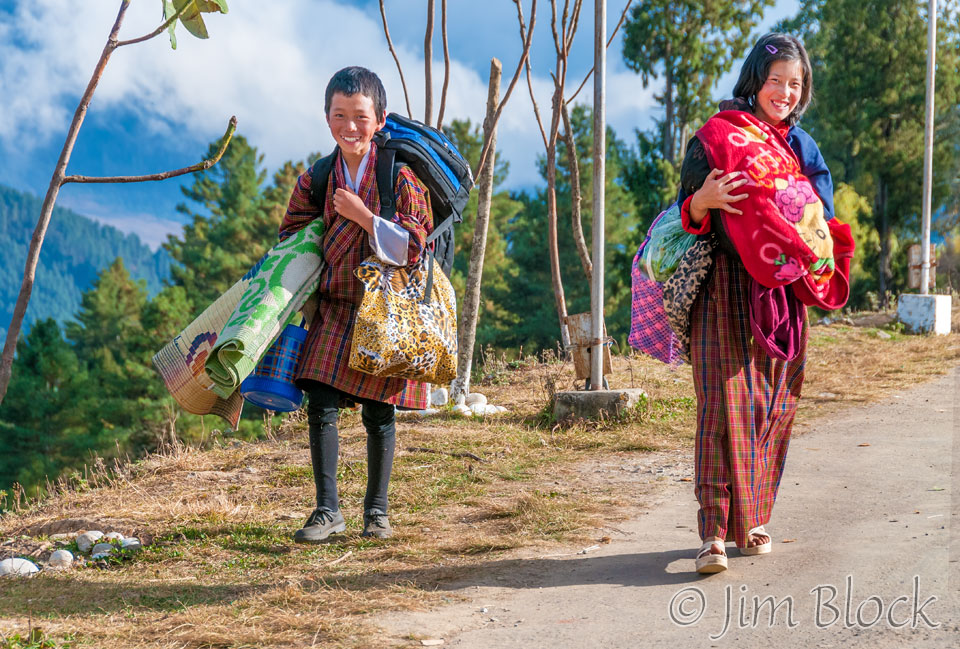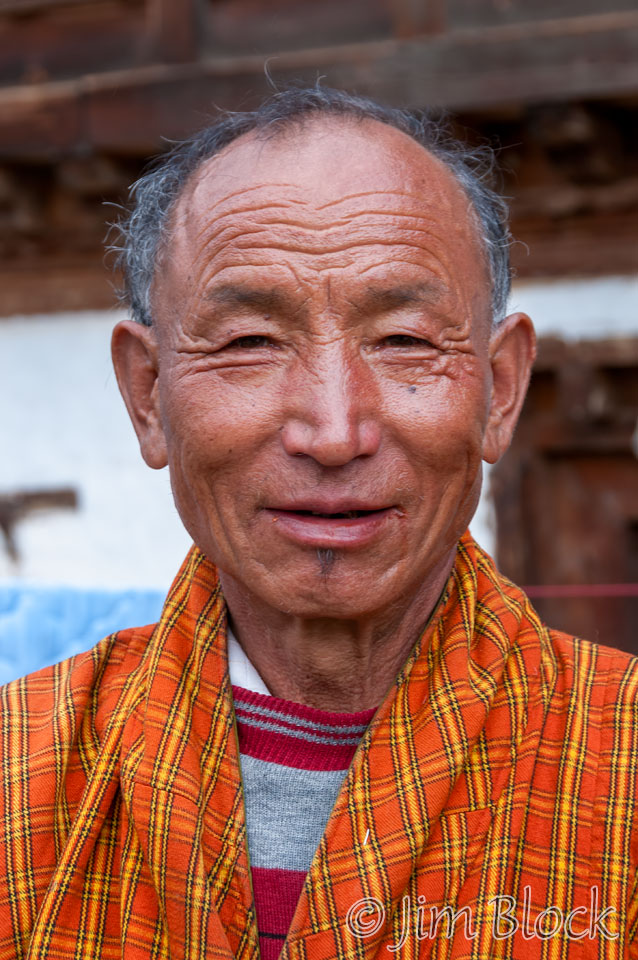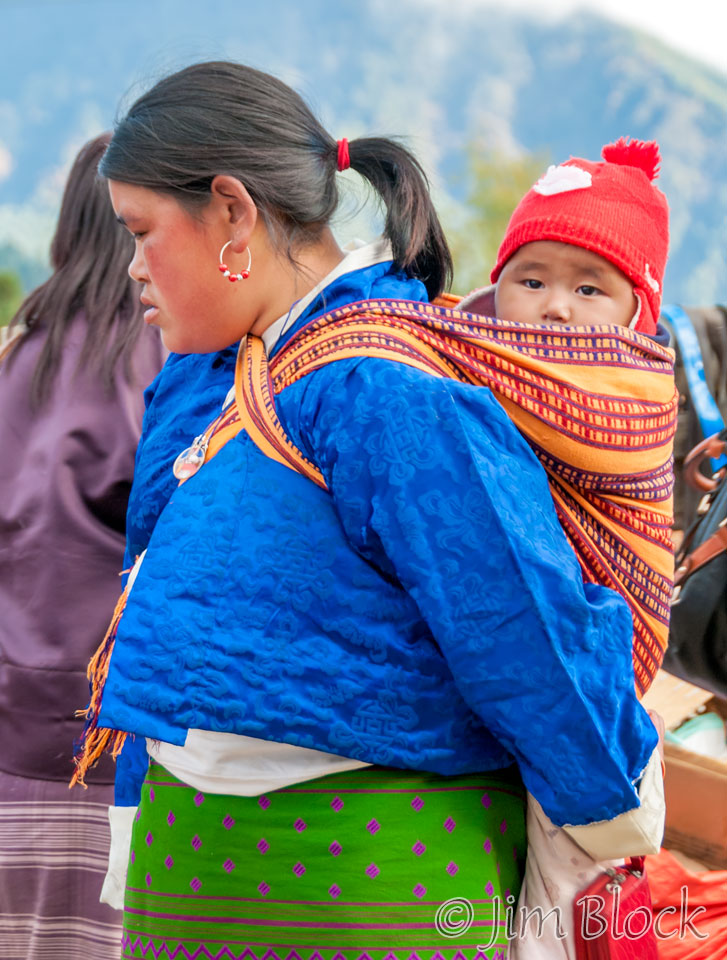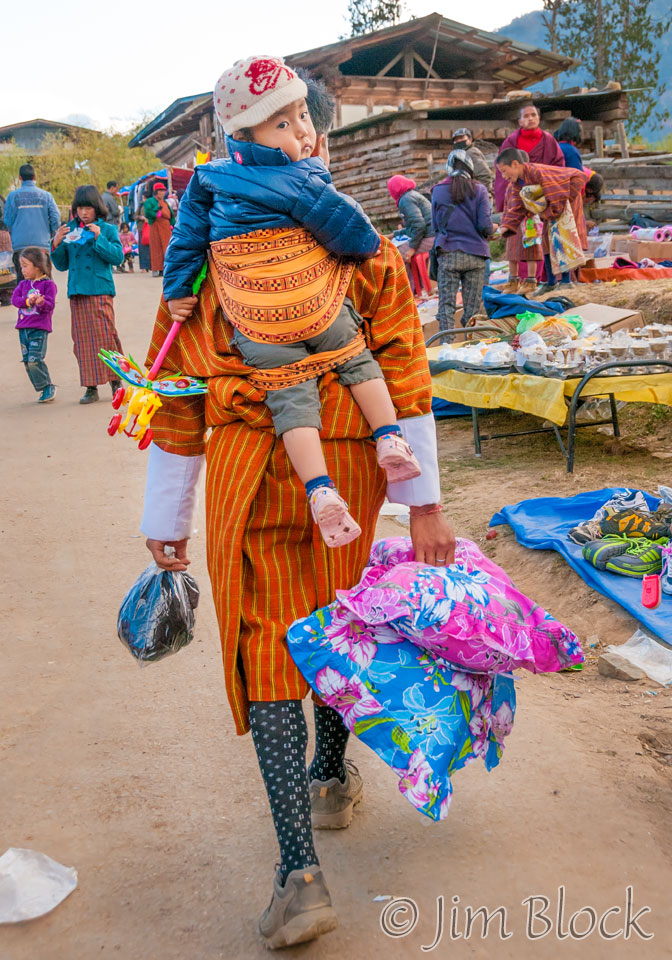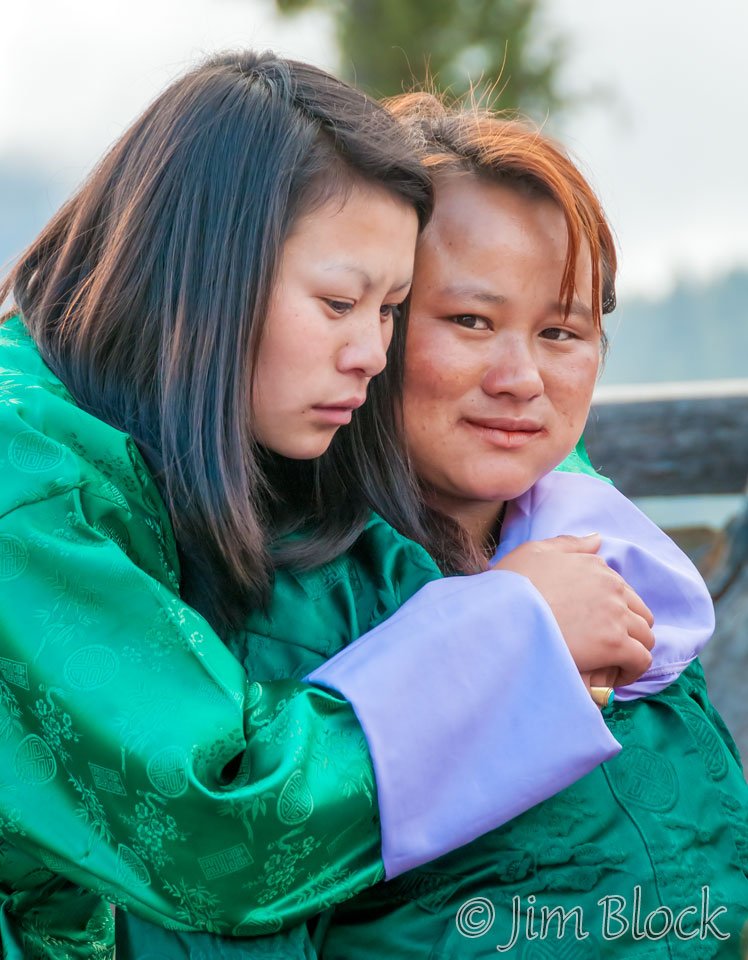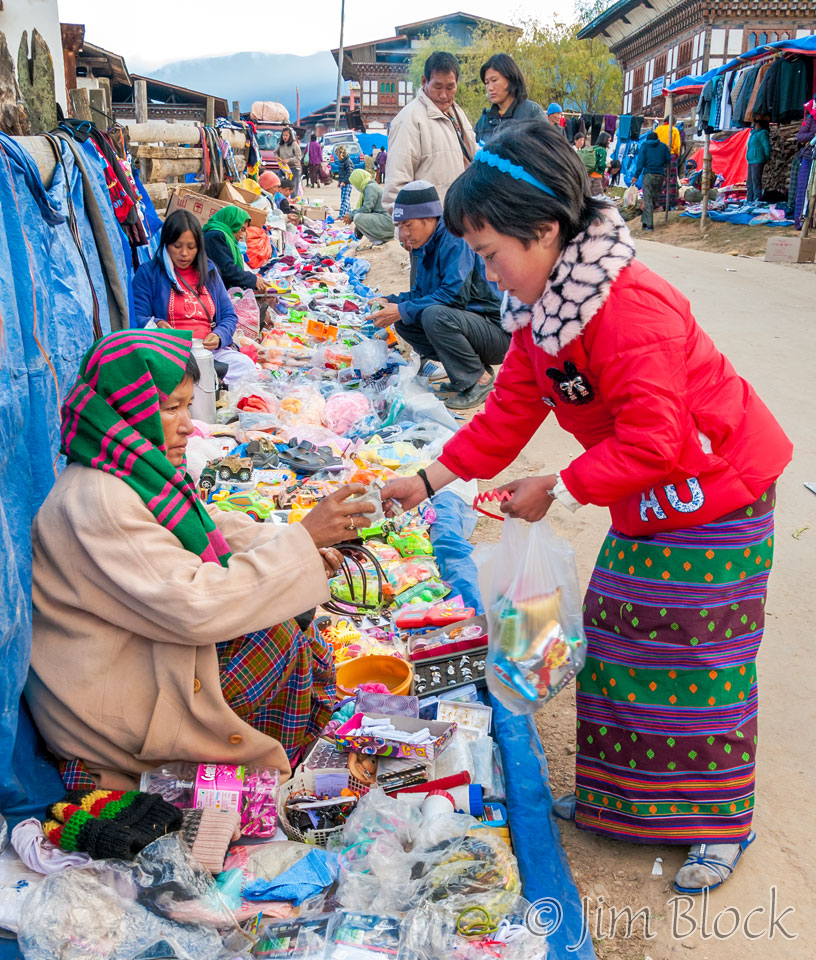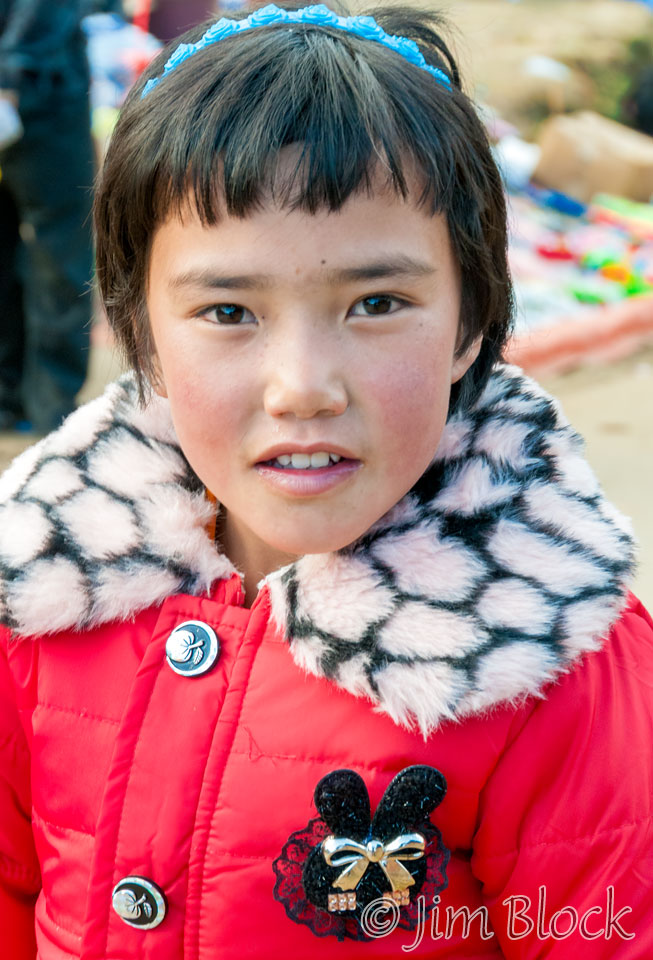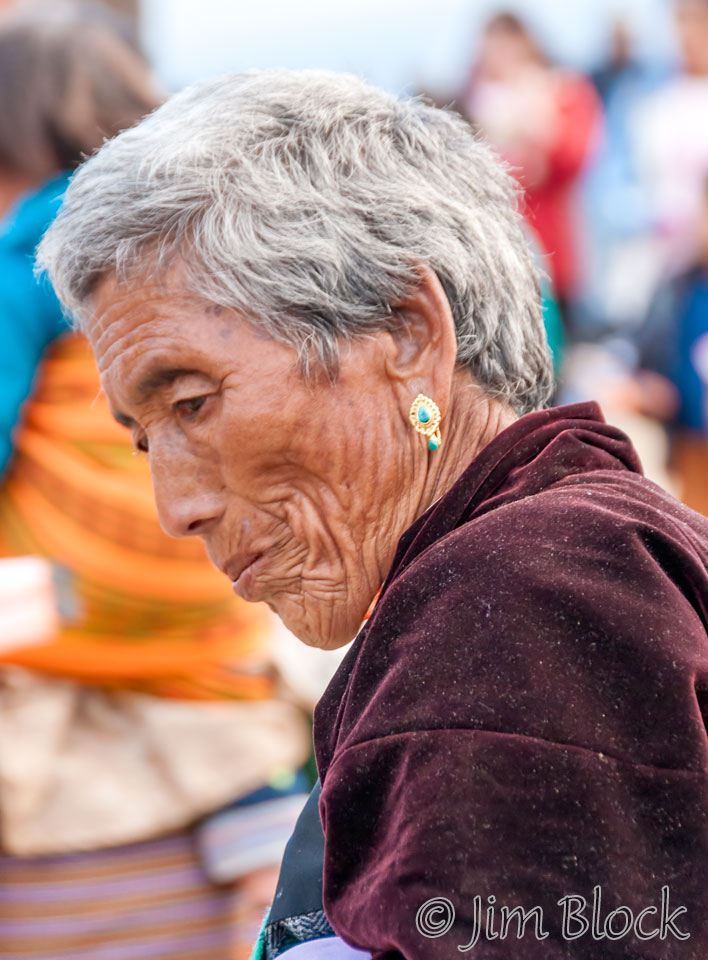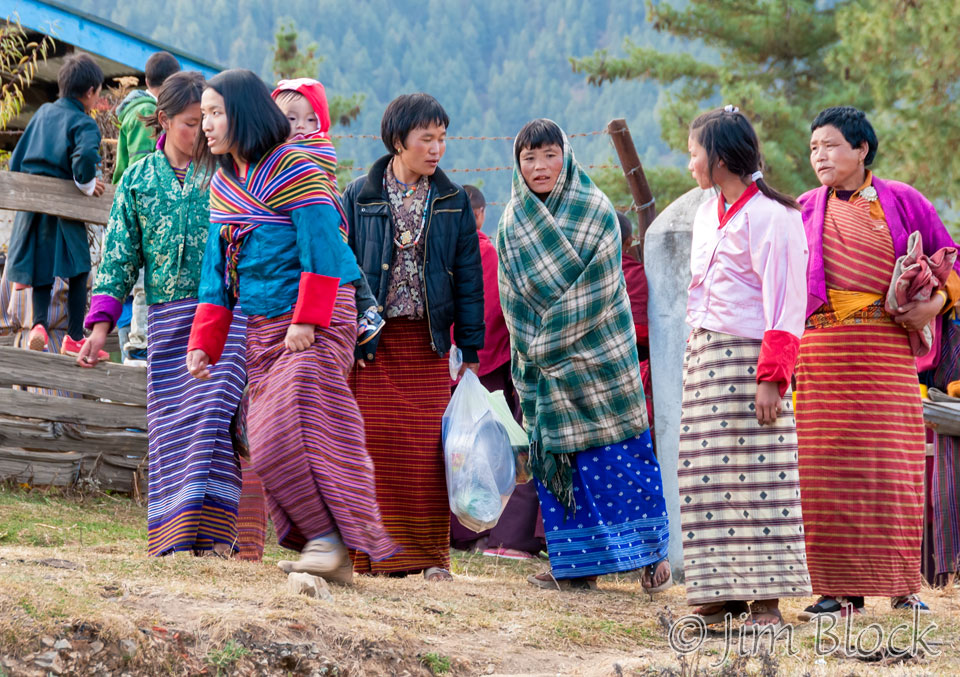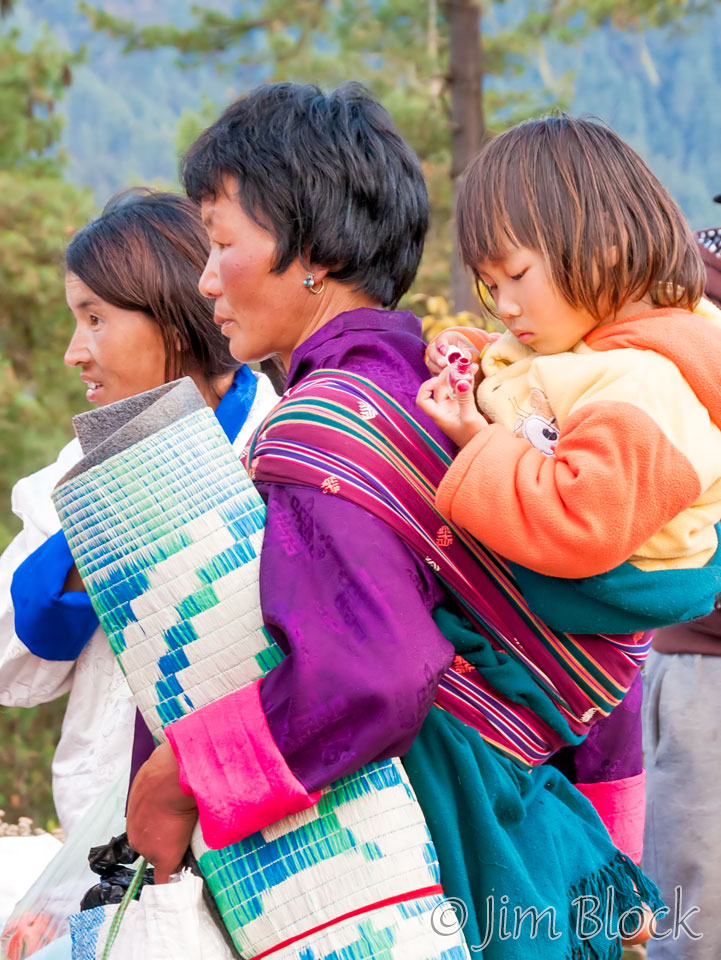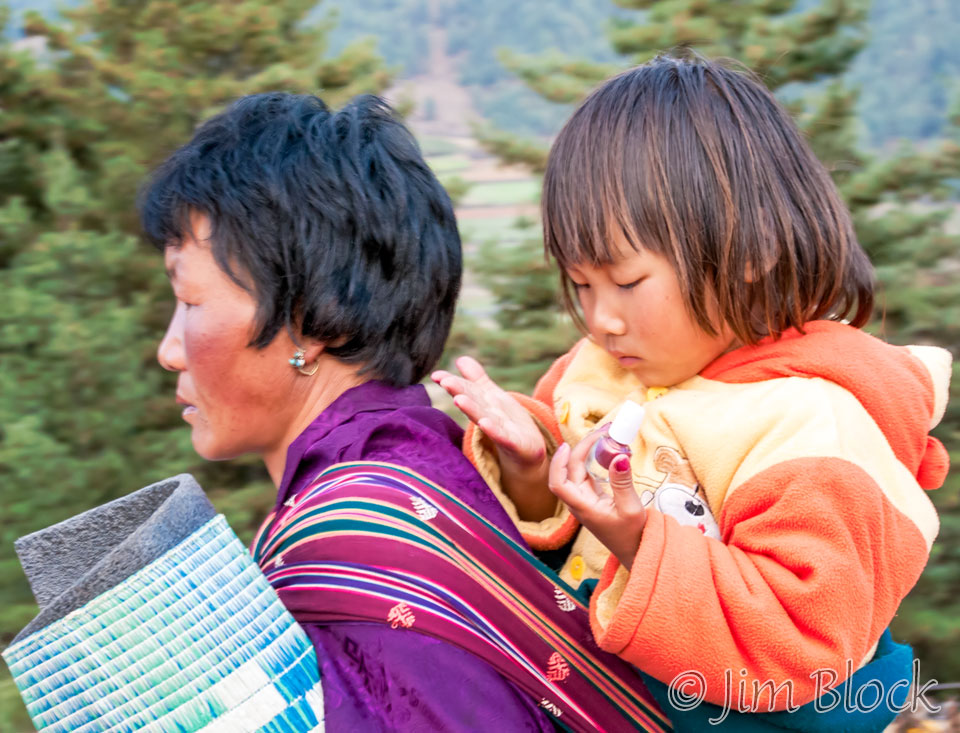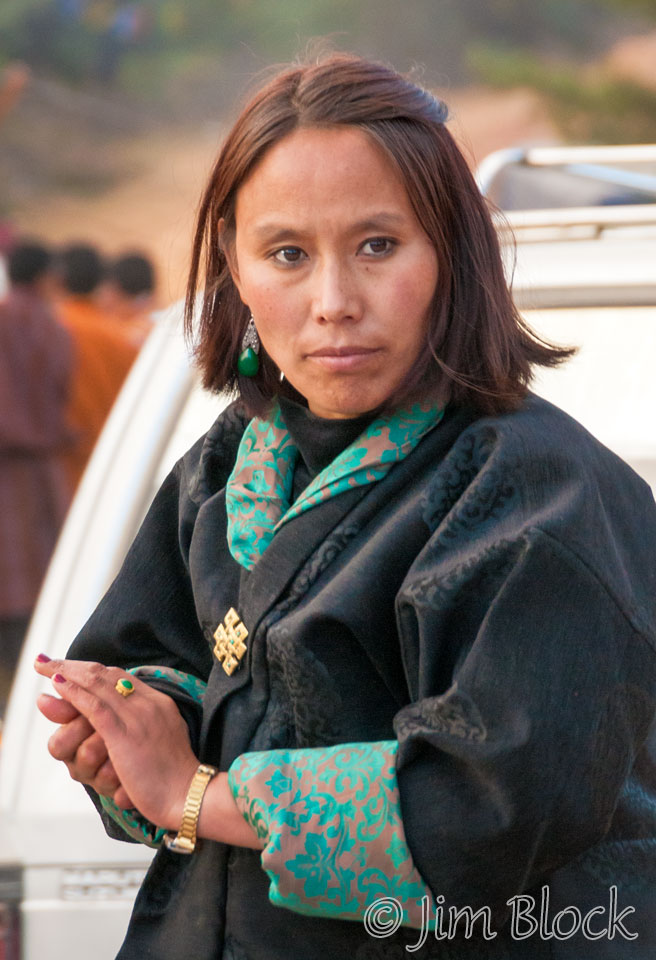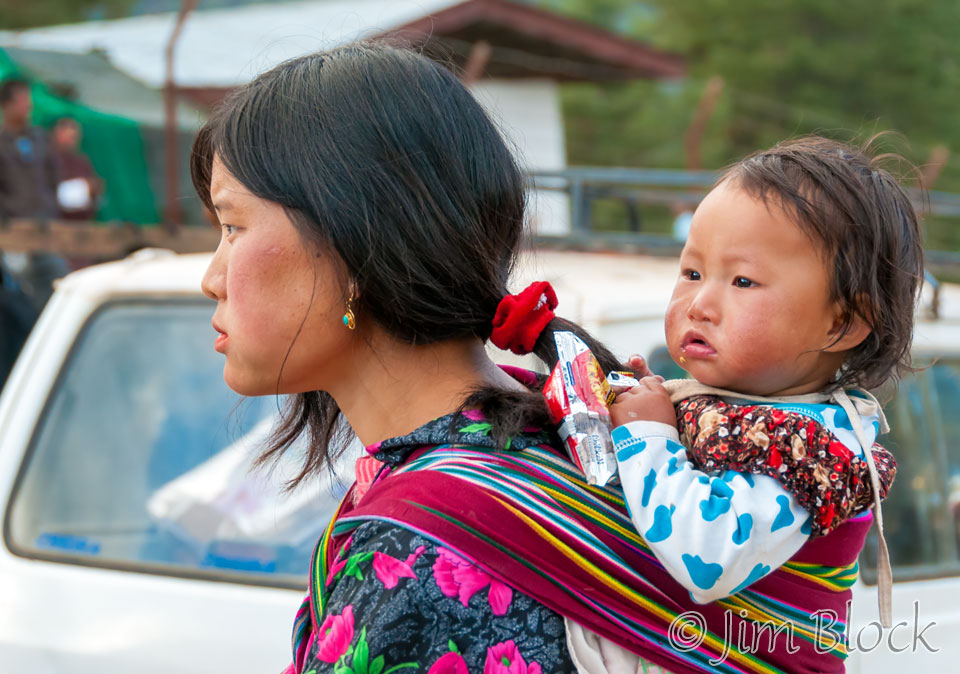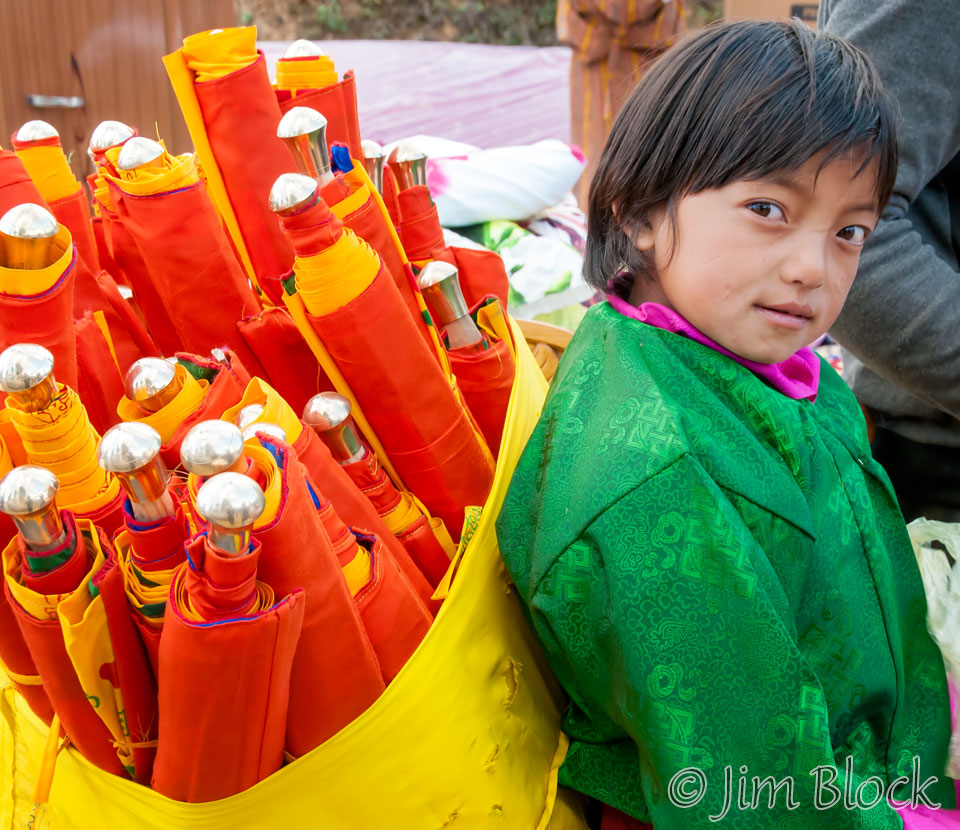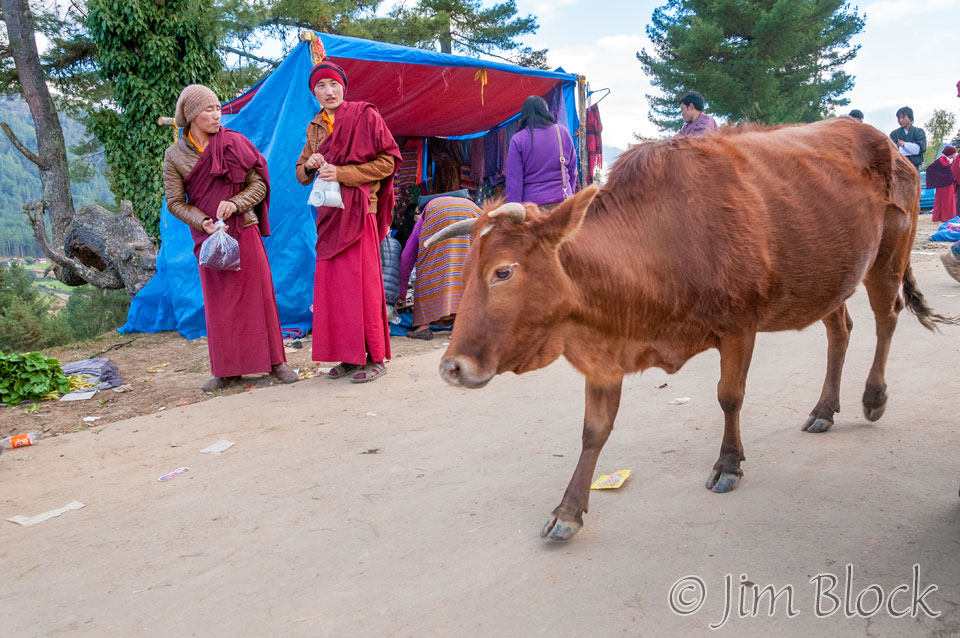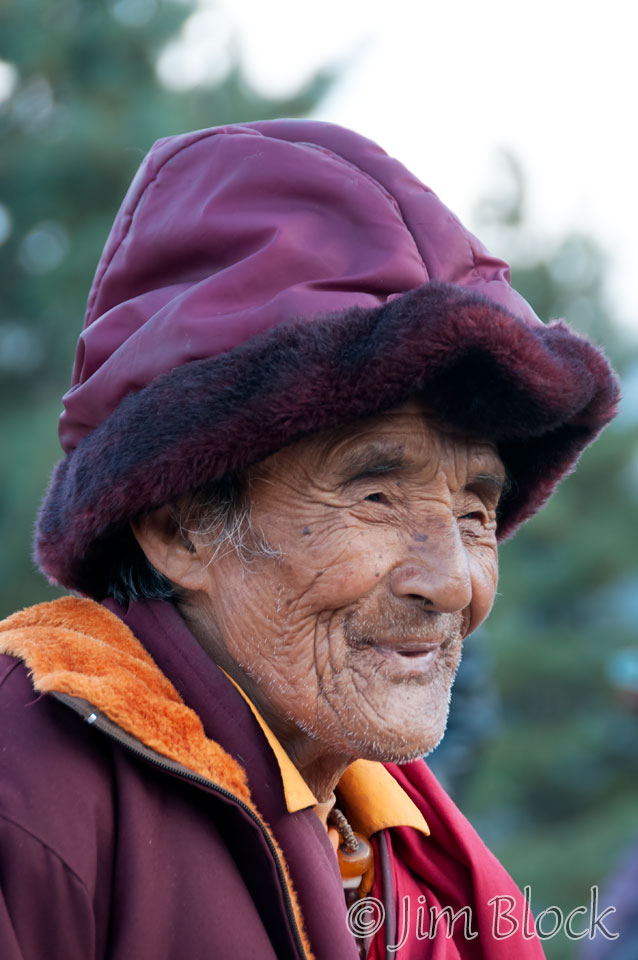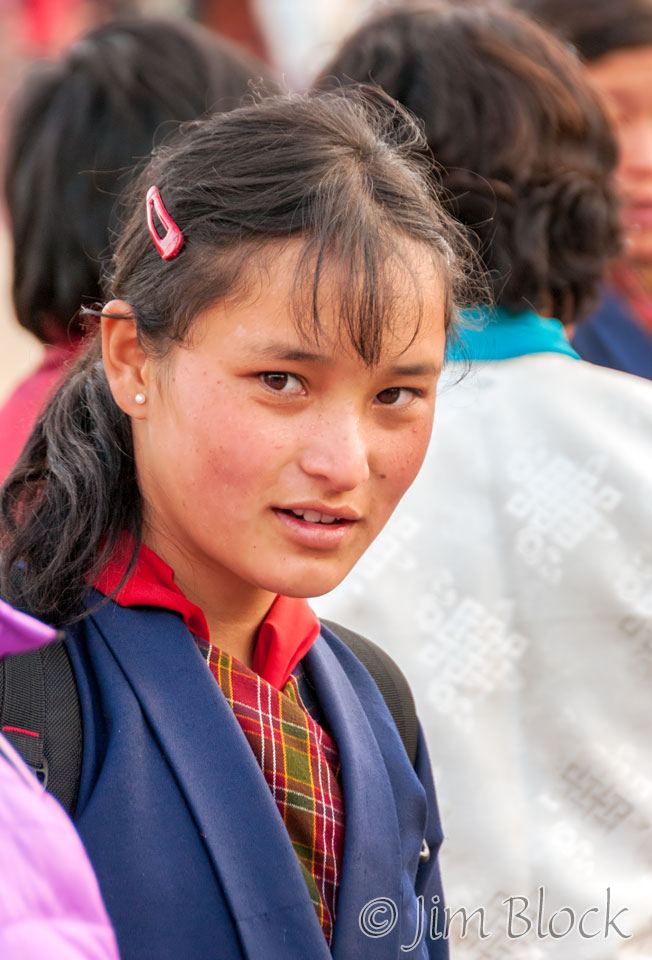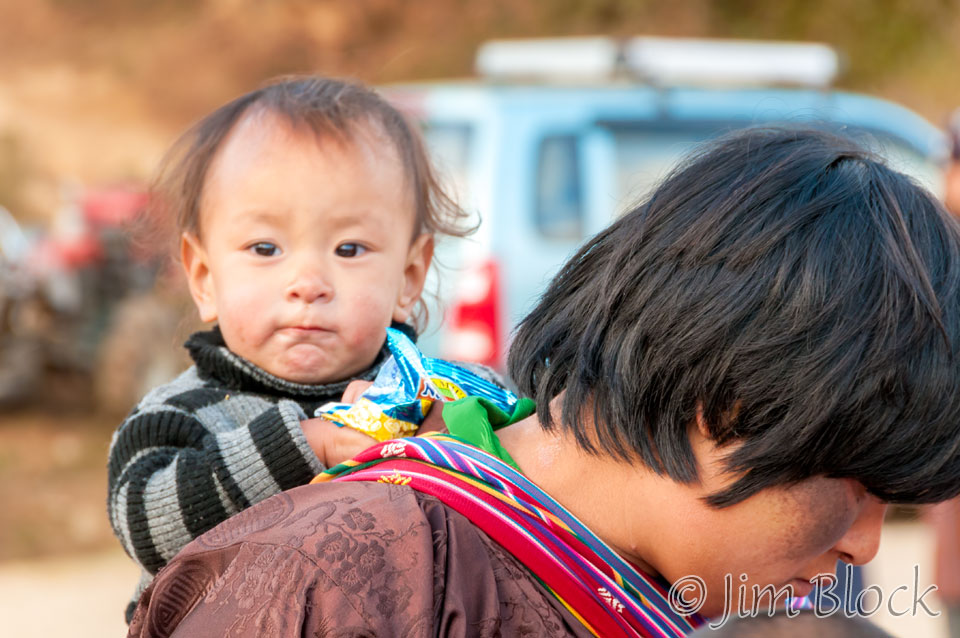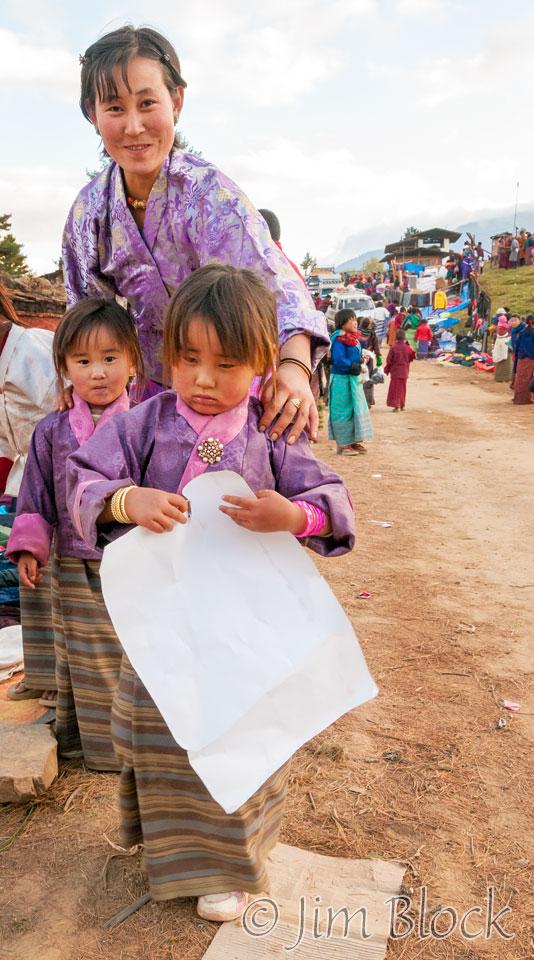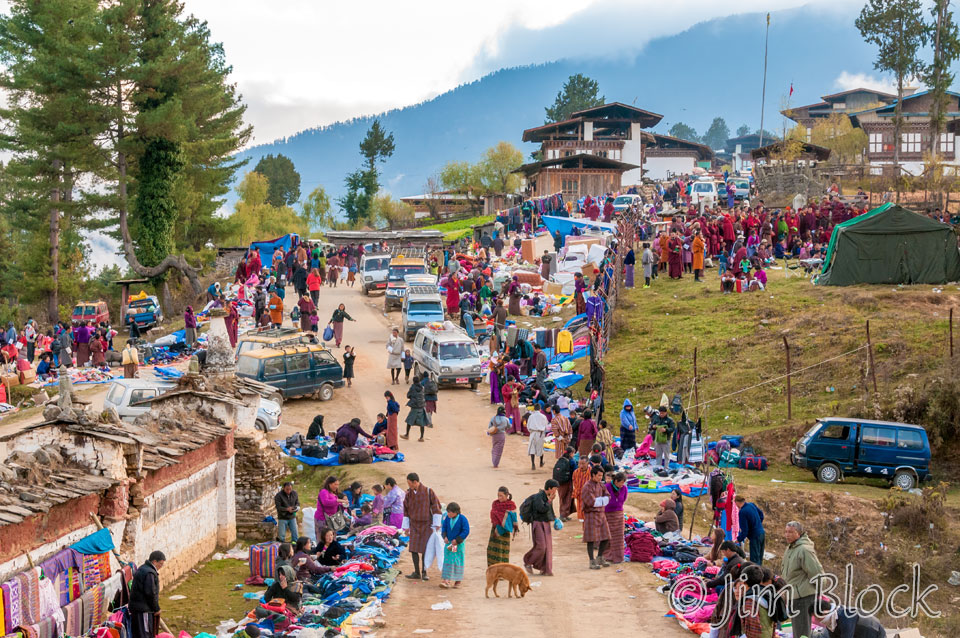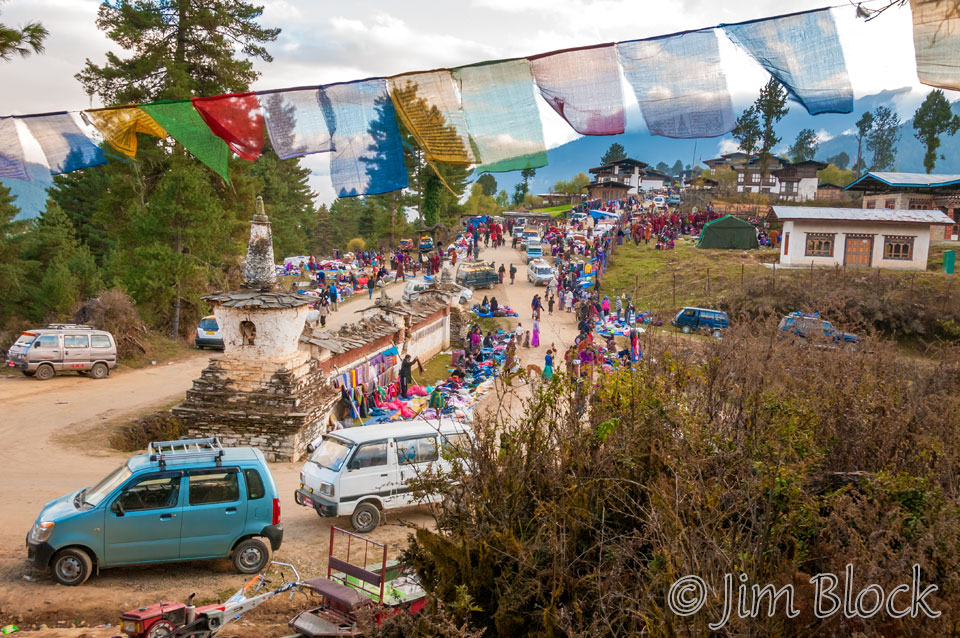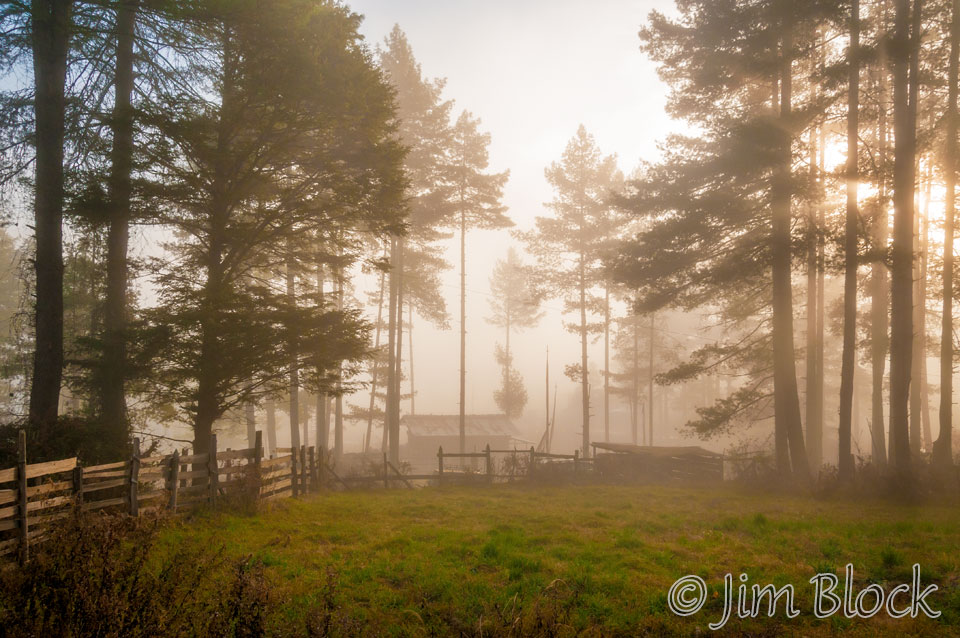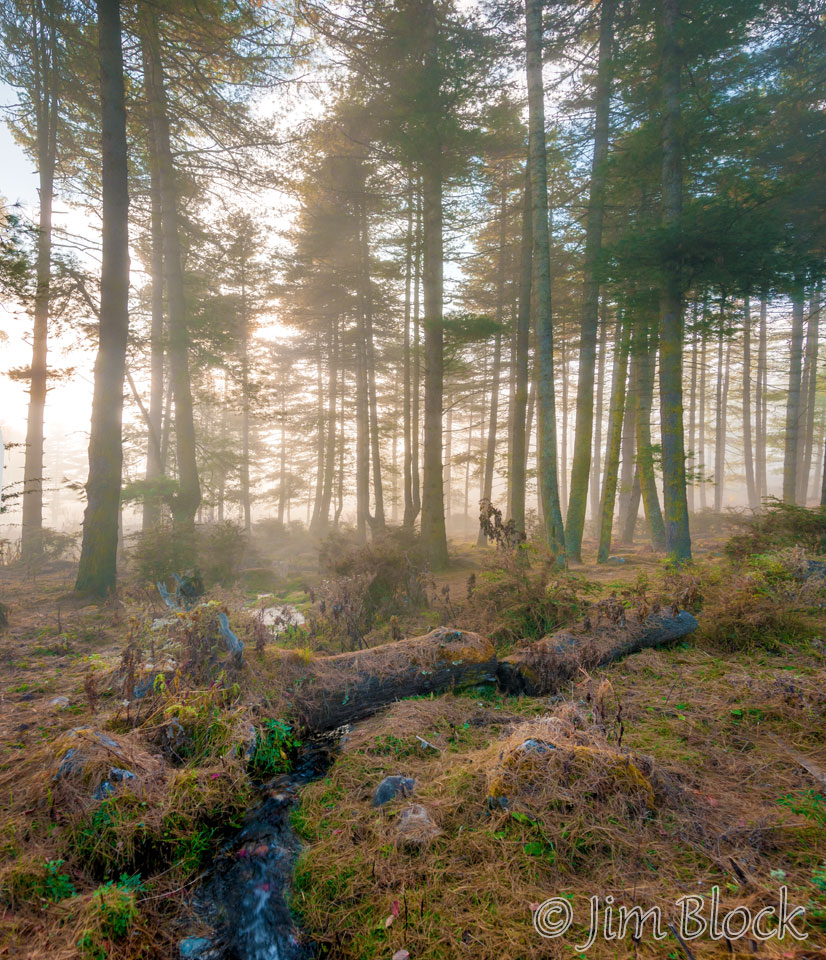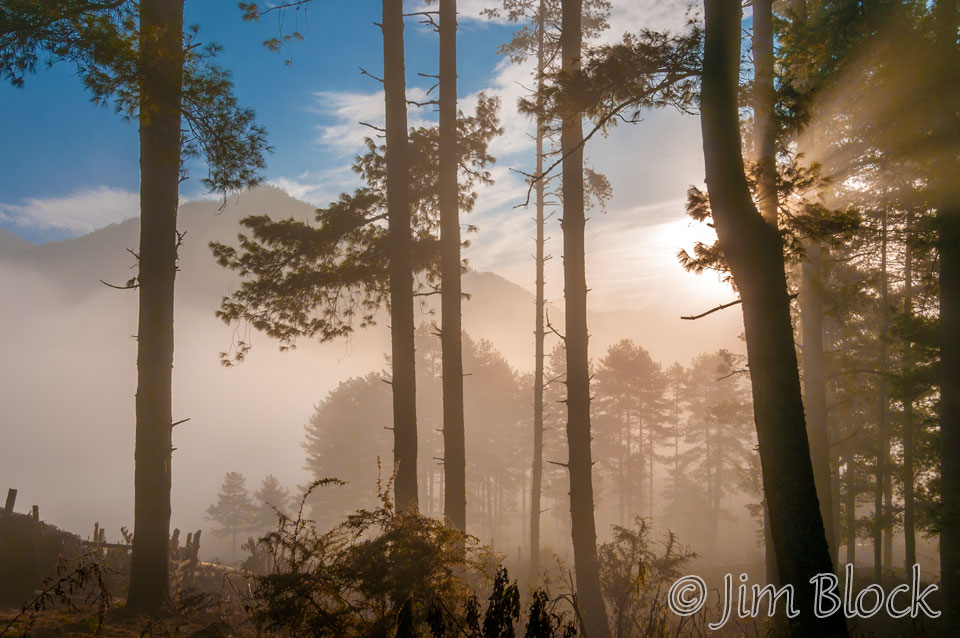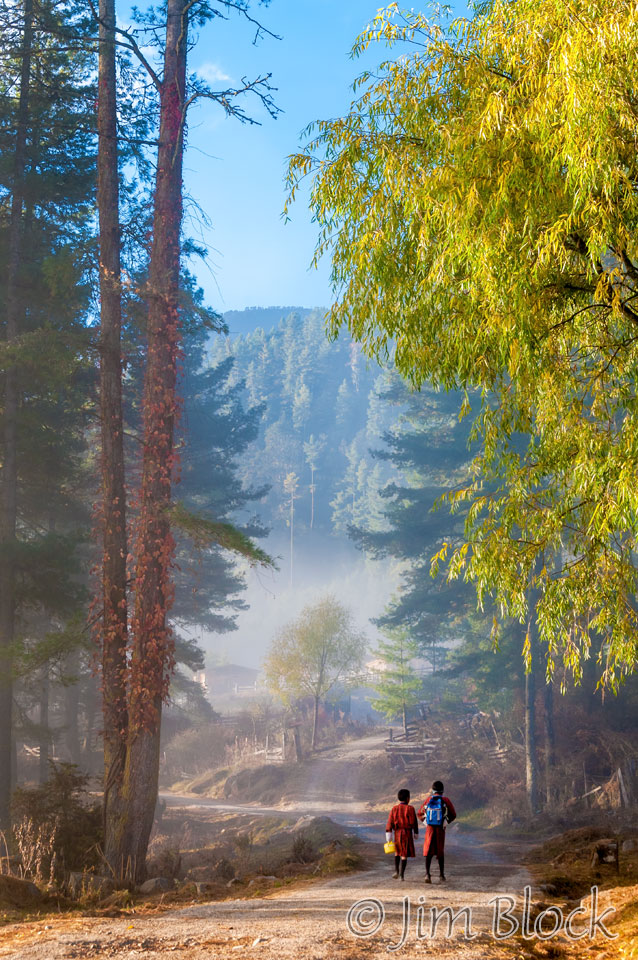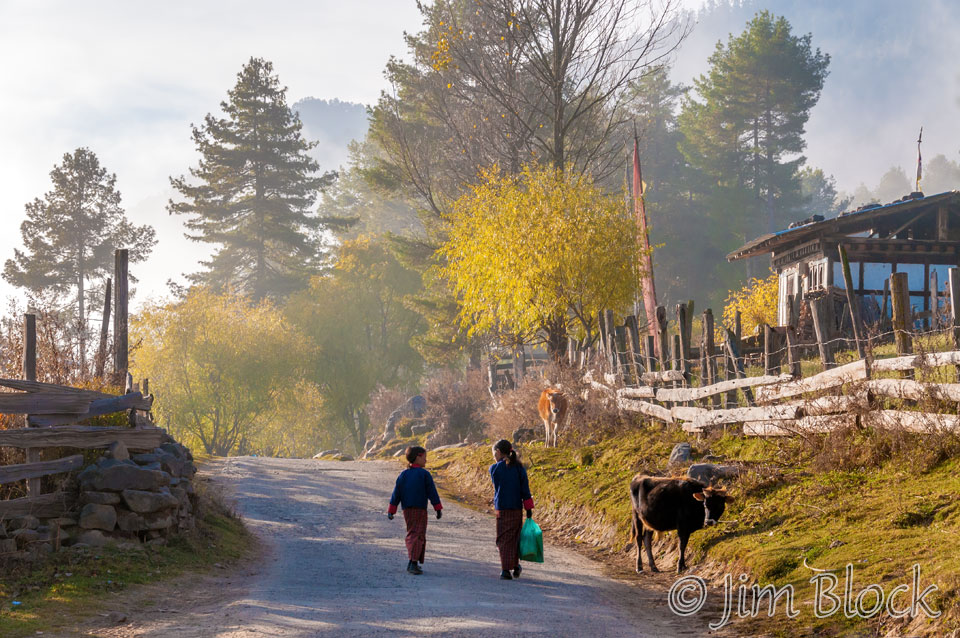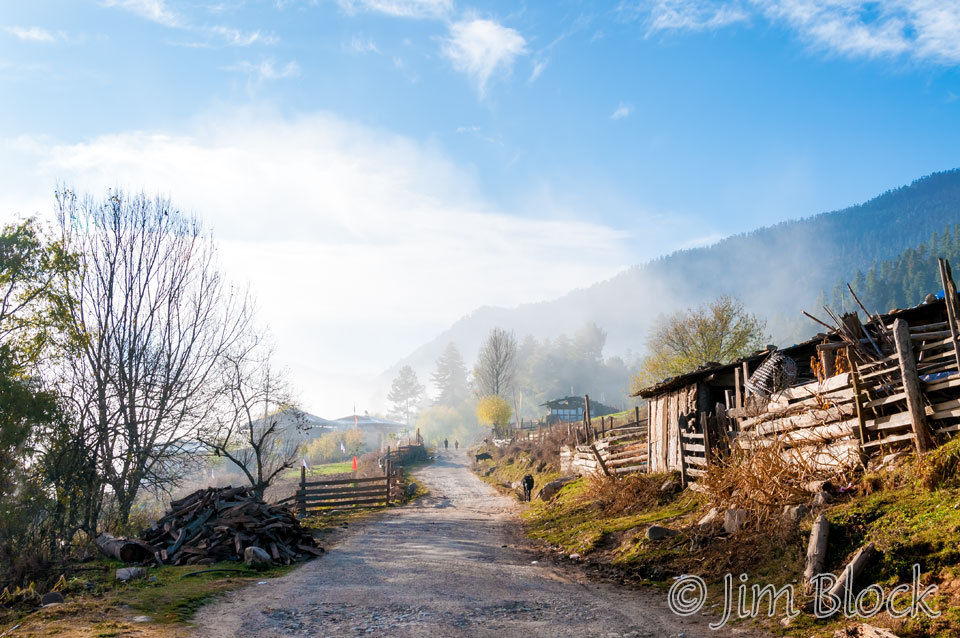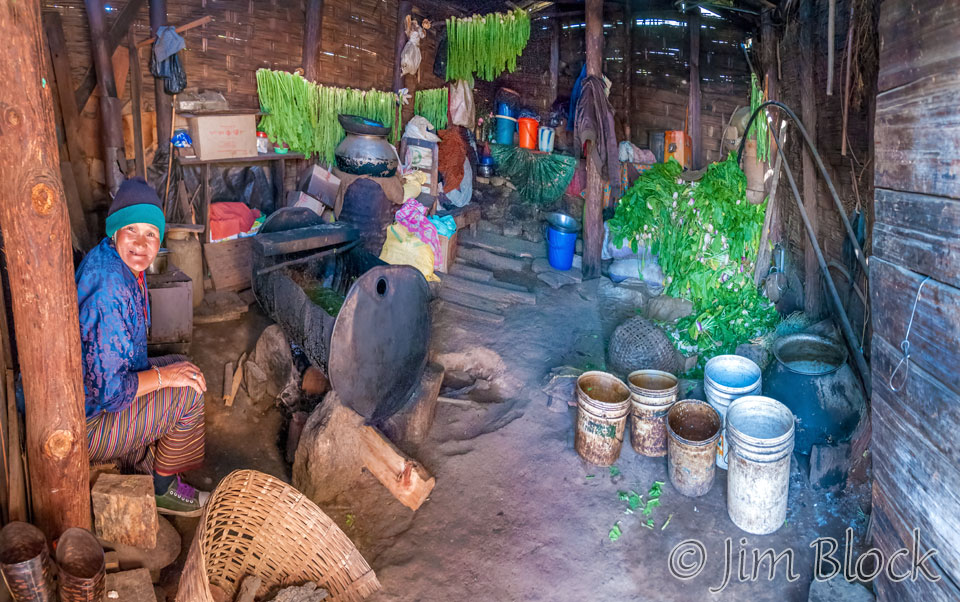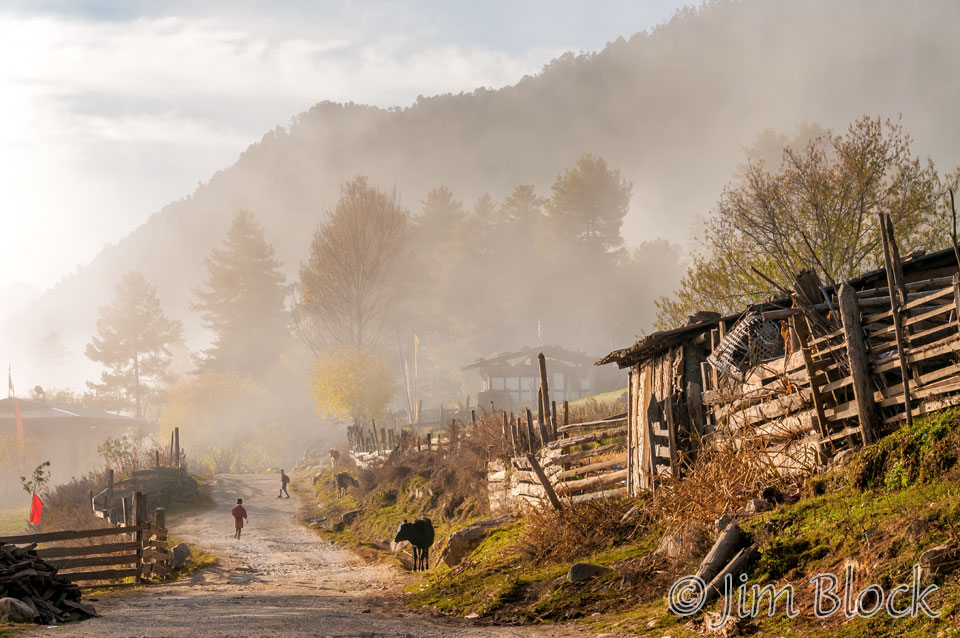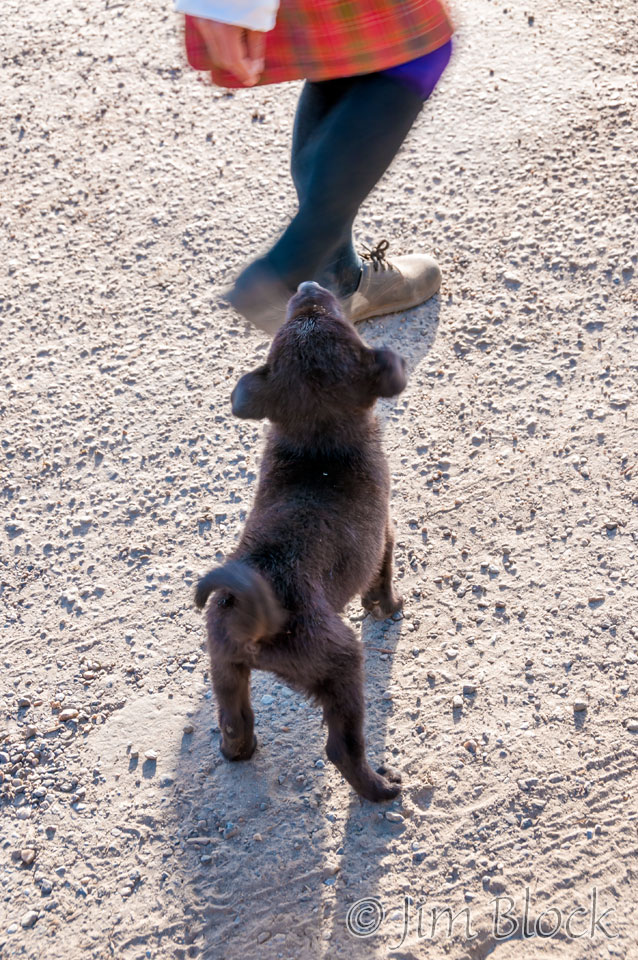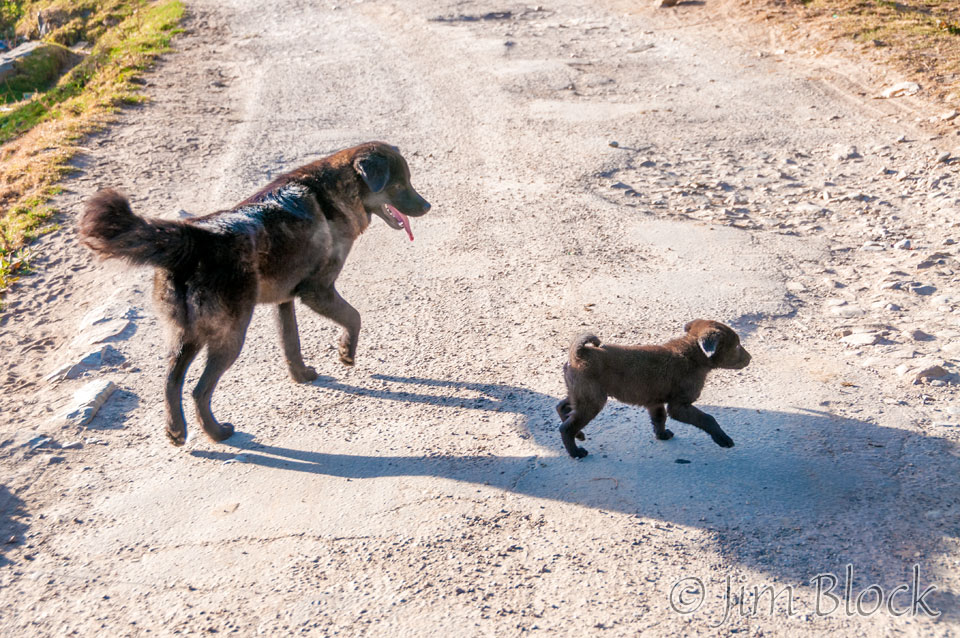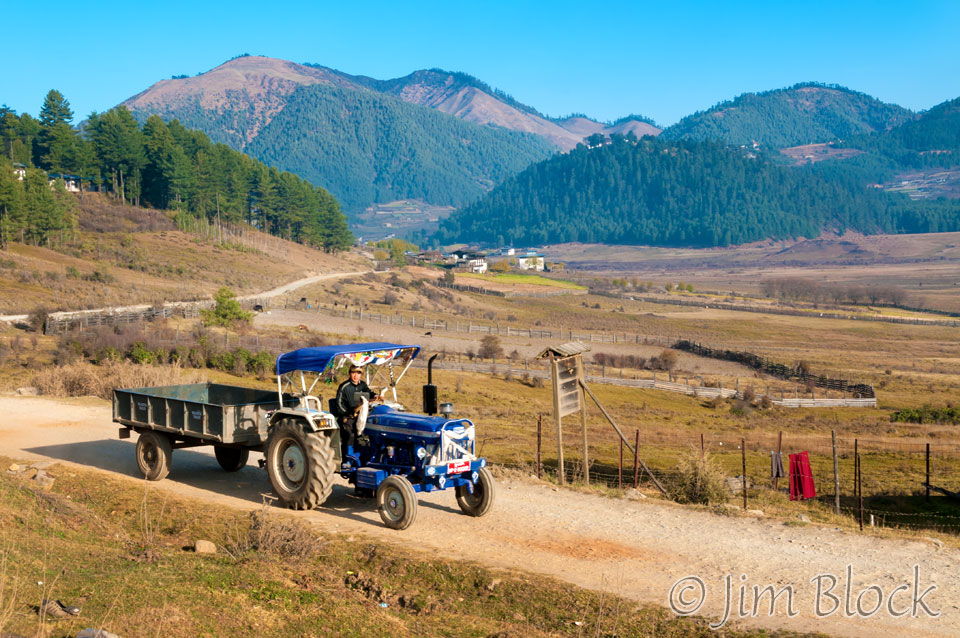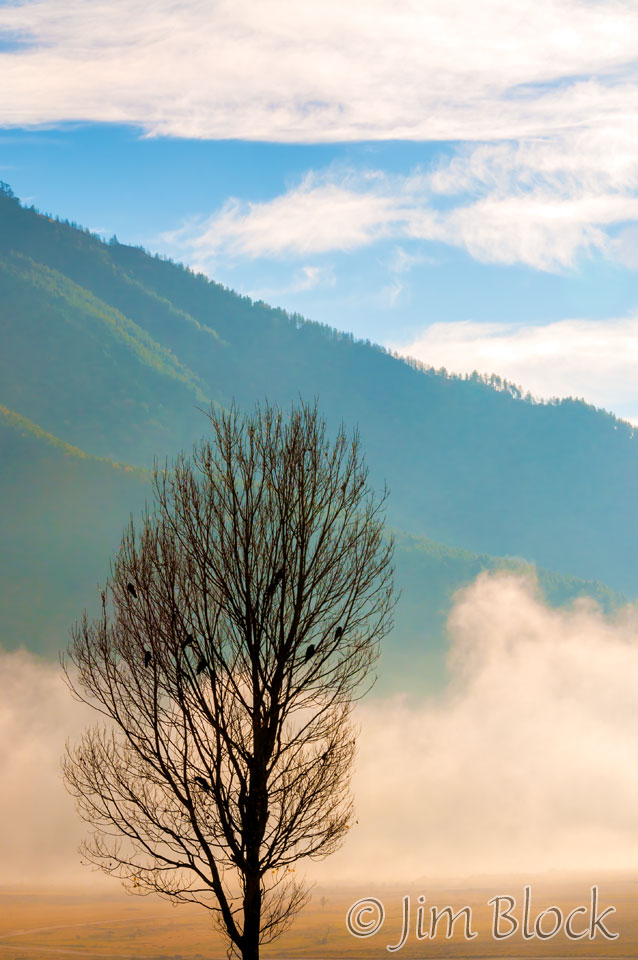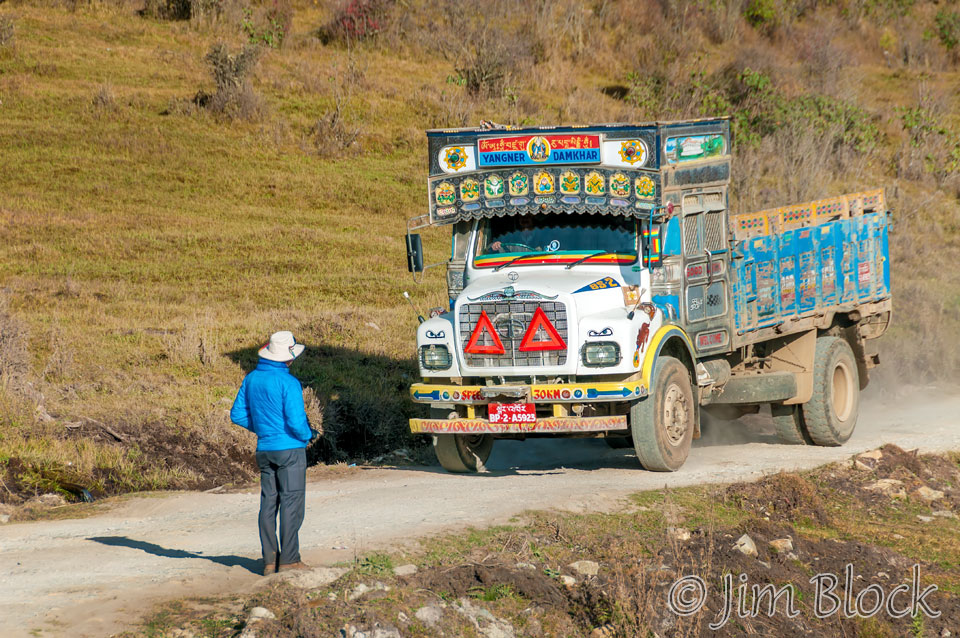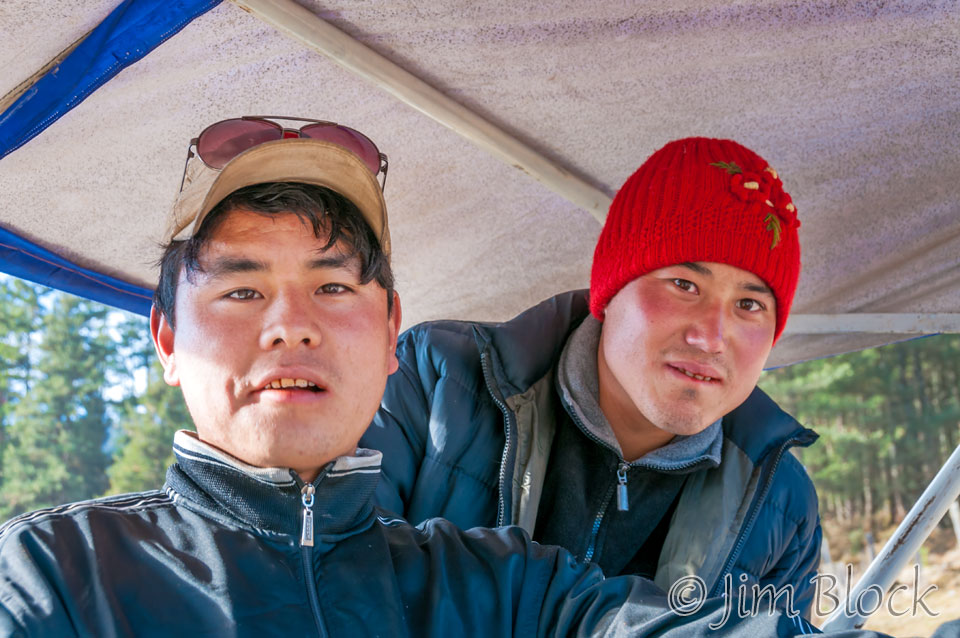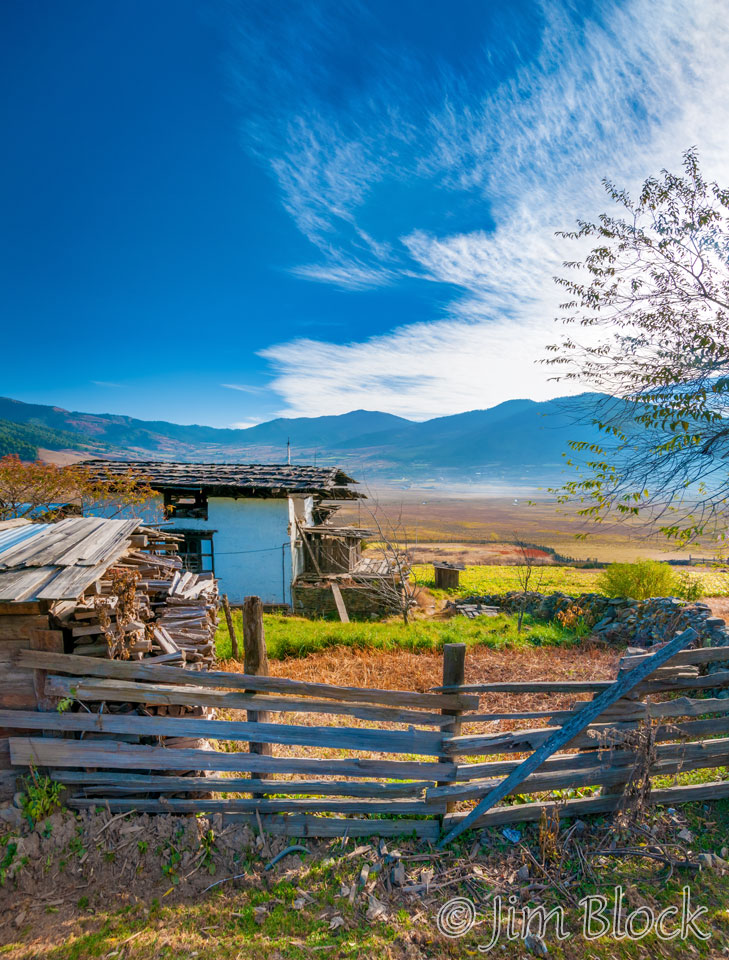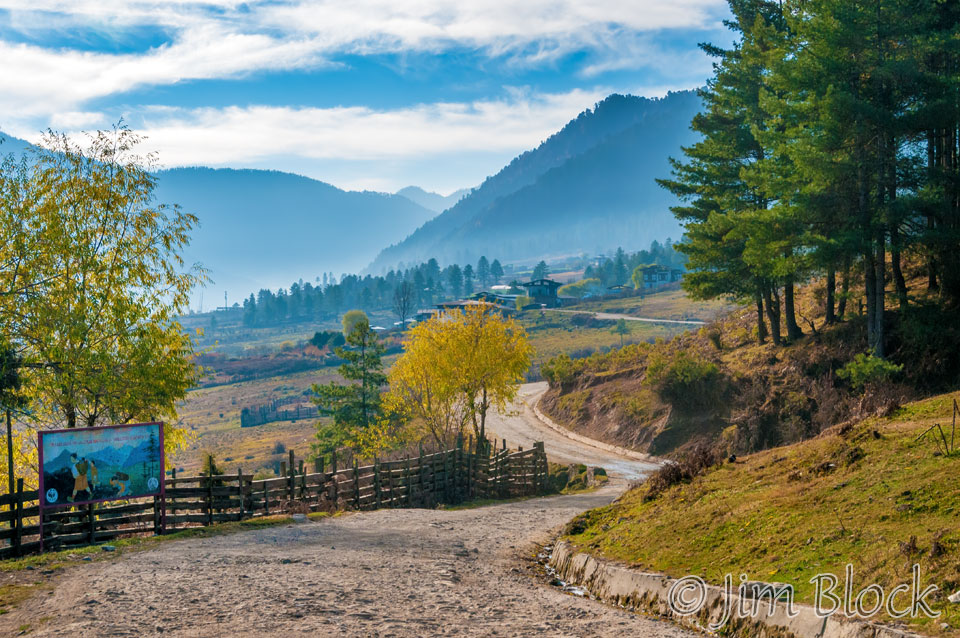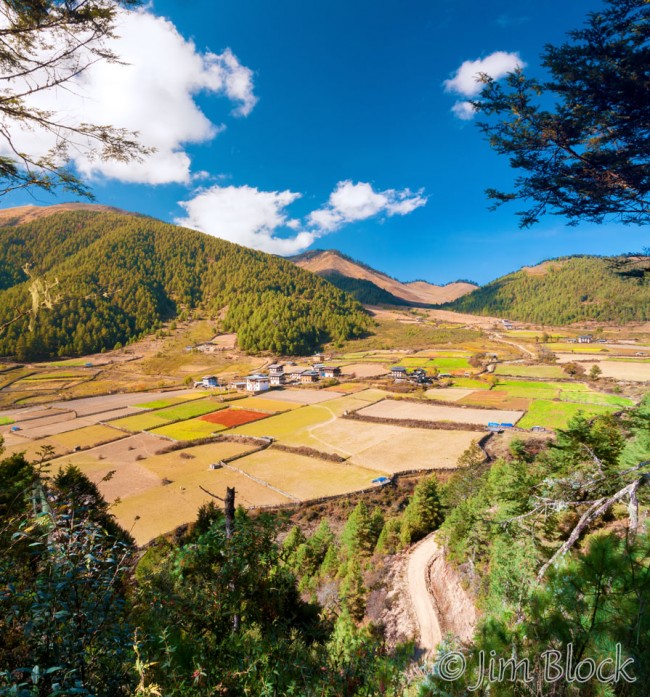
We spent the first part of the morning of November 10 in Trongsa touring the fantastic Royal Heritage Museum, in the Tower of Trongsa. This is a beautifully renovated five-floor old watchtower for the dzong below. The art on display was absolutely mind-boggling. Unfortunately, as was the case in the temples of Bhutan and most museums, photography was not permitted. After a short walk through town, we toured the Trongsa Dzong, a beautiful and amazing structure dating back to the 16th century. It looks almost straight down on the Mangde Chhu (river) and the deep valley. Then we headed to the Phobjikha Valley.
Two and a half hours later, after averaging perhaps 20 mph on a bumpy and narrow road, we got our first view of the beautiful Phobjikha Valley seen at the right. This long and broad valley is the winter home to the endangered black-necked cranes that travel south from Tibet late in October. It is also host to the 16th annual Black-necked Crane Festival every November 11th on the birthday of the 4th King of Bhutan.
We drove down into the valley on an even rougher and more challenging road. When we got within several miles of our hotel for the night we got out and walked. That was a very pleasant hour as we were able to see and photograph sites we couldn’t from the car. One of these was a man preparing a hot stone bath while his young wife did the wash. You can see the wooden “tub” at the far right in the first photo in the slide show below. We would soak leisurely in a hot stone bath the last night of our trip in Bhutan.
Below is a Google Earth view of the valley. We entered along the road with the faint yellow line from the left bottom of this image. We got out of the car and started walking to our hotel approximately below the “y” in “Monastery”. The red line is the hike from near our hotel to the monastery and festival the next morning. The large field where the black-necked cranes were is indicated.
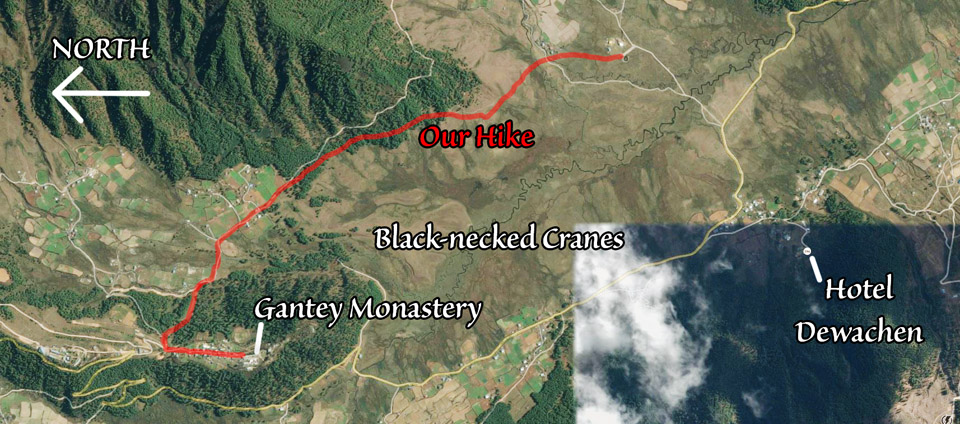
The black-necked cranes were very far away in the valley. No one was allowed to approach these endangered species. Here are a series of shots as we zoom in on the cranes just a bit. They are the white things in the field.
The view from our Hotel Dewachen window across the valley was special that evening.
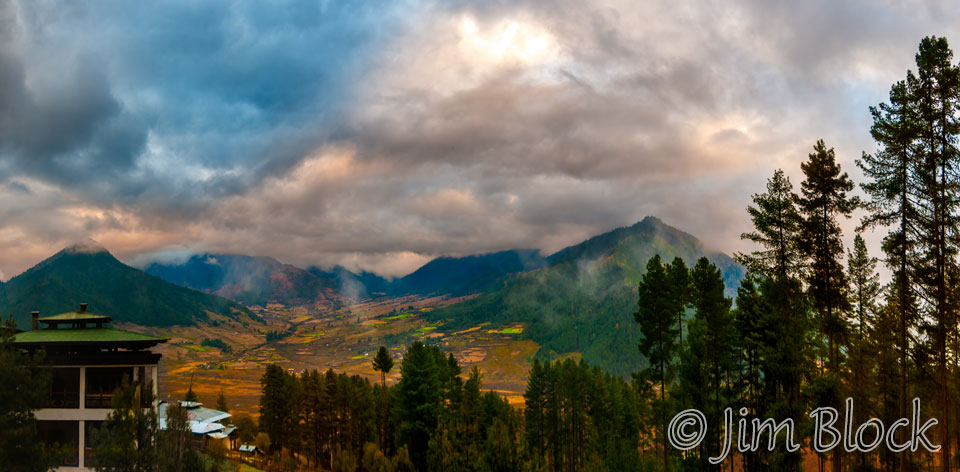
The next morning we left our lodge in the early morning fog for a leisurely few hour hike along the Phobjikha Valley to the site of the Black-necked Crane Festival. The festival is held every November 11 at the Gangte Goemba to celebrate the arrival of the black-necked cranes to the valley where they spend the winter before returning to their breeding grounds in Tibet. The goemba is a Buddhist monastery built originally in 1613. It sits overlooking this broad and beautiful valley on a forested hillside in central Bhutan. Here are some of the photos I took during this walk.
Further along, as the trail began to merge with a dusty, bumpy road, a local vehicle rattled by carrying its passengers to the festival. In fact, families were coming to the festival using any mode of transportation available.
We climbed the hill to the festival site and looked back over the small village of Semchubara.
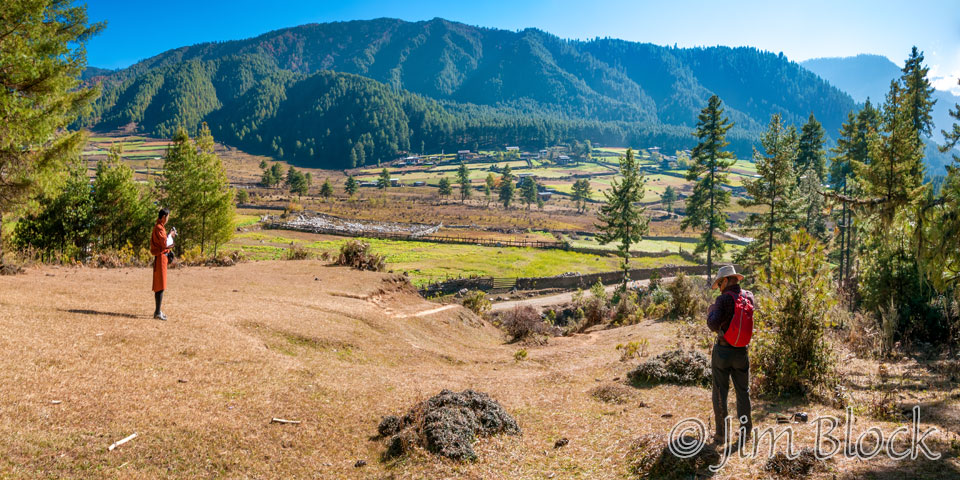
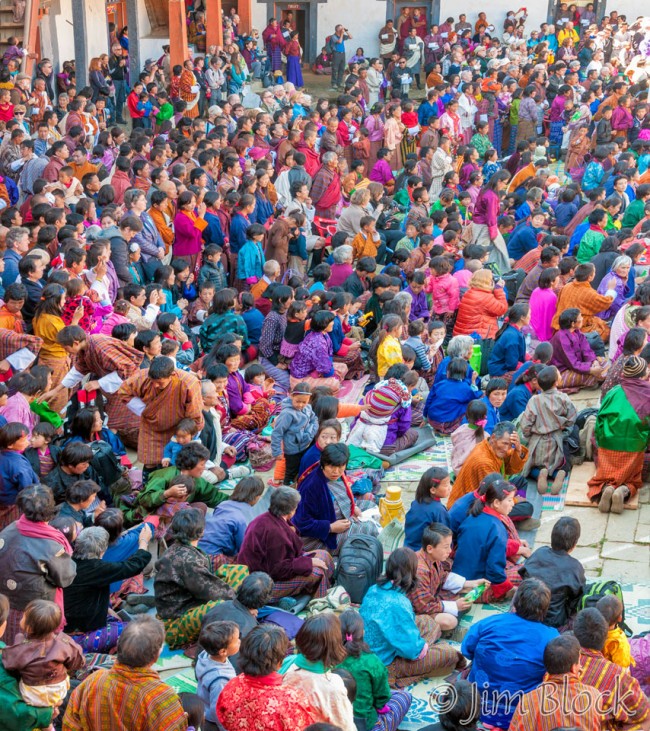
Inside the monastery a crowd was gathering. Dancers emerged from the temple. Some wore colorful masks and costumes, others were in traditional elegant dress, and some of the children were dresses in black-necked crane outfits.
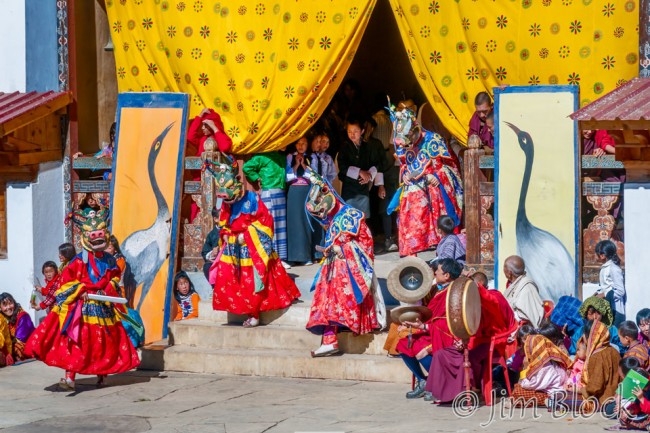
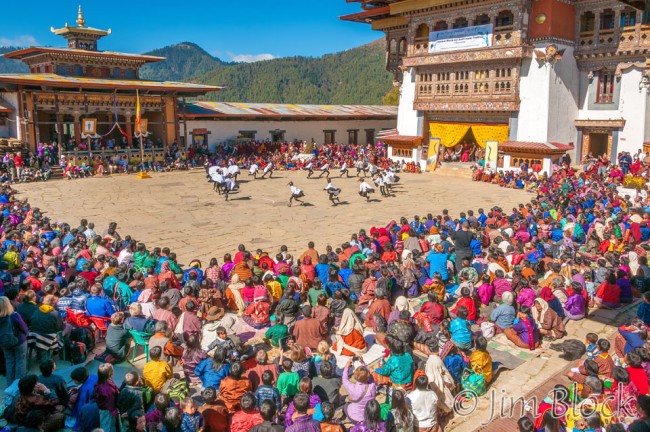
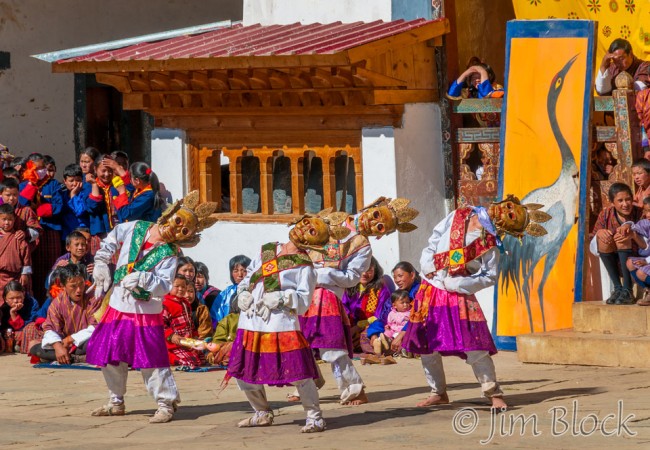
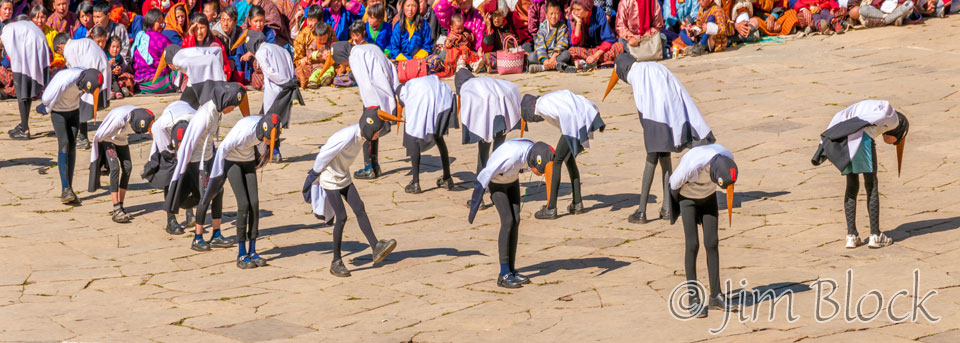
I went into the temple and took some photos of dancers about to emerge.
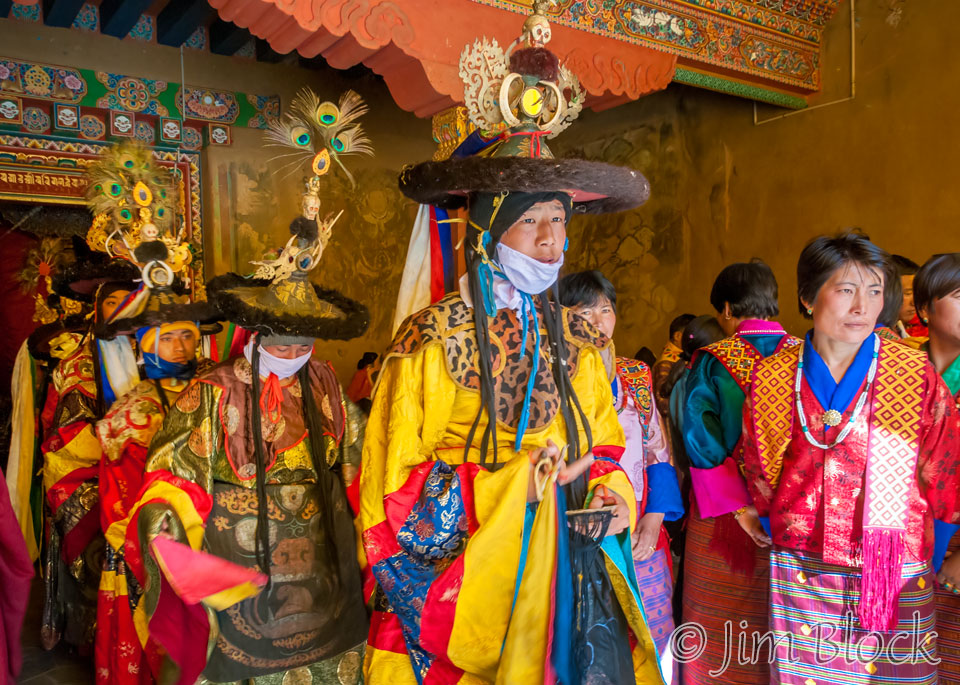
The monks and townspeople watched the festival and provide great photo subjects. All were very friendly — no problem with a chillip (foreigner) photographer.
After lunch, the monastery was totally empty. The celebrants were shopping along the road leading to the monastery. Many merchants from Timphu and beyond were selling their wares. Since only about 30% of the people who live in the valley have cars, and it is a long way to Timphu and even further to India, this is a special opportunity for the folks who live in the valley to buy goods they would not be able to get otherwise. It is a win-win for everyone, and especially for a photographer capturing the villagers while they were engaged in serious activities.
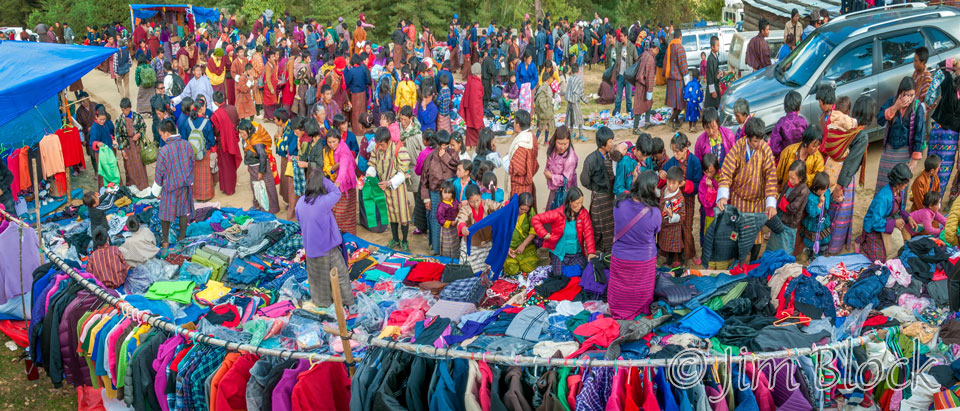
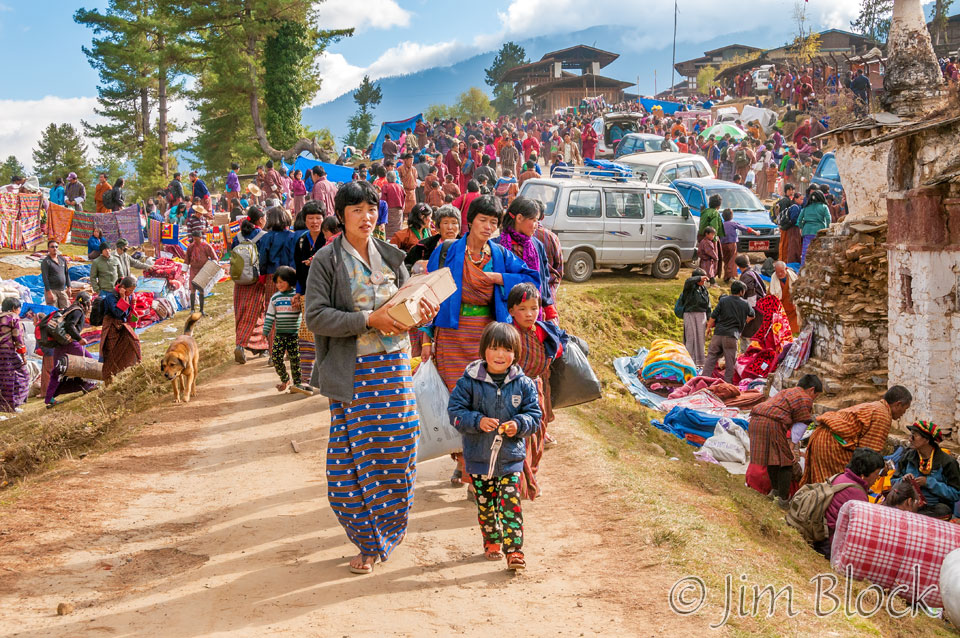
As the afternoon wore on I got some photos of the late light in the valley from near the monastery.
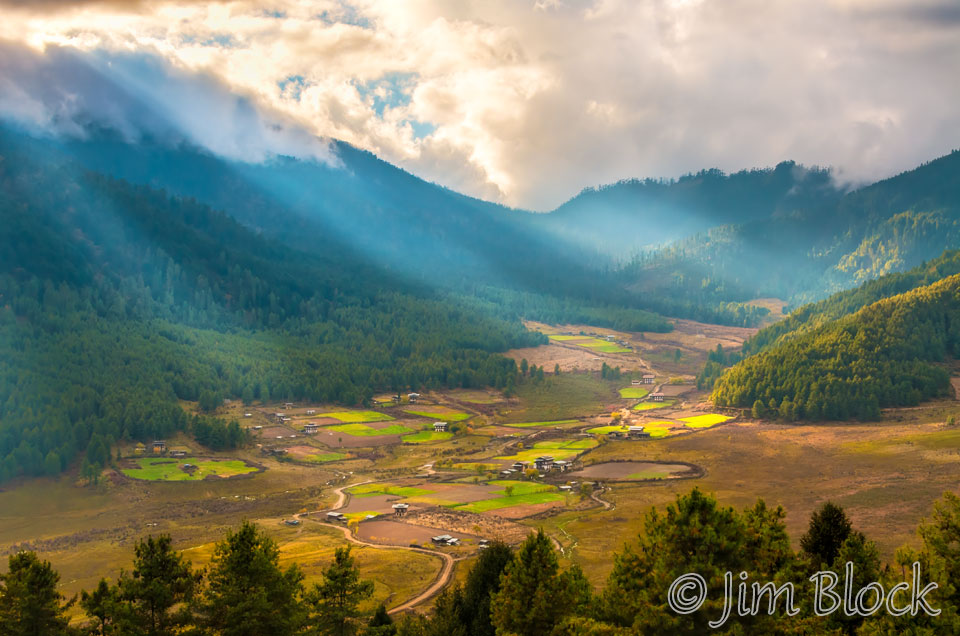
As we finally departed, I looked back and photographed the scene looking back at the monastery. This photo shows our very knowledgeable and helpful guide Lakey, who is also a serious photographer.
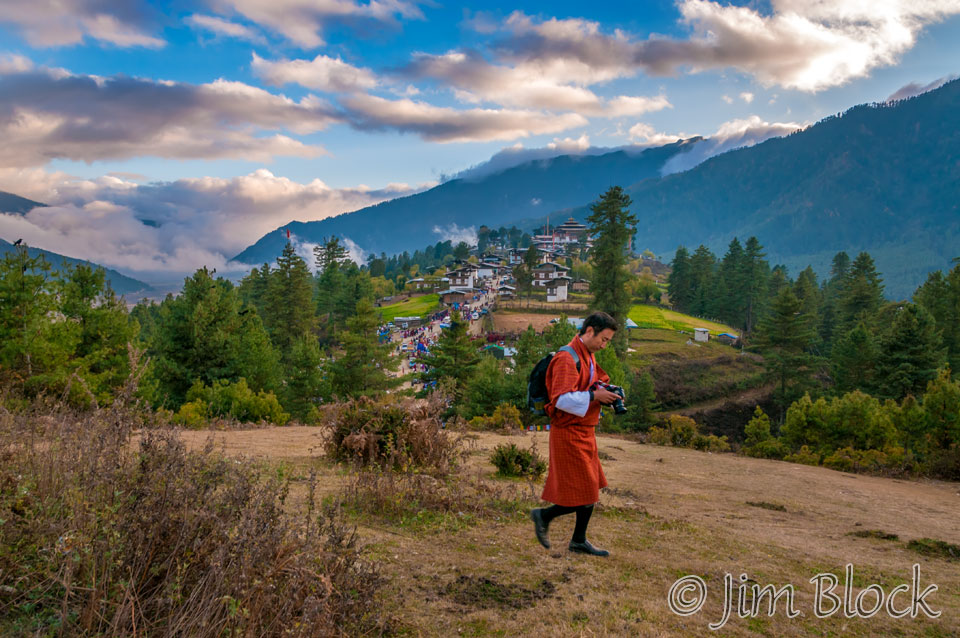
The next morning Stephen made the excellent suggestion to hike the several miles to our first stop by ourselves. It was a wonderful walk along the road in the early-morning fog. Children were going to school, and we found many interesting sites along the way.
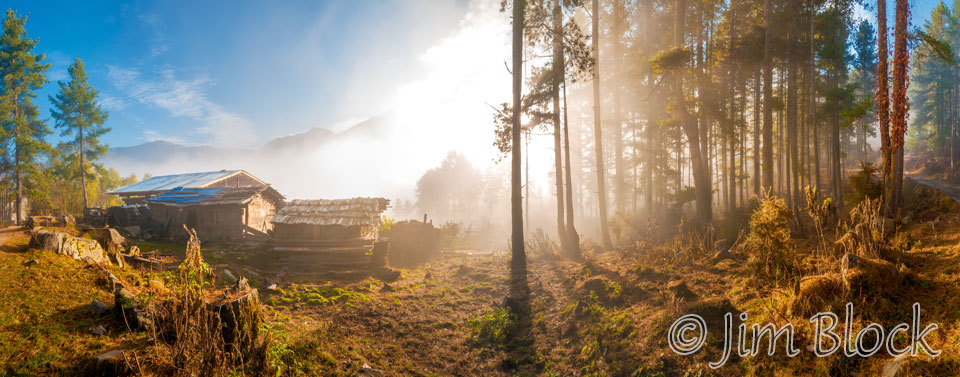
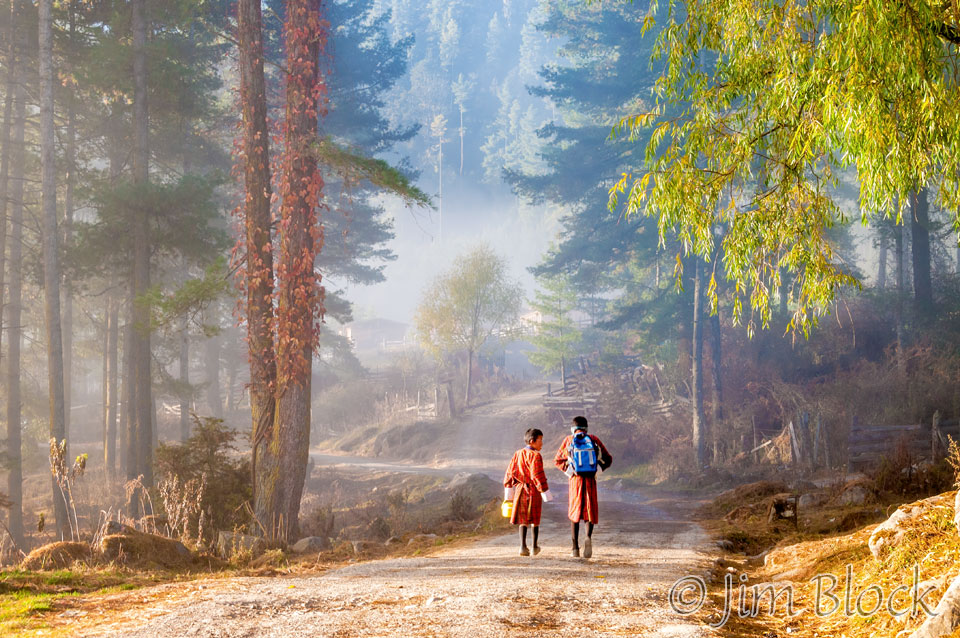
We concluded the morning with a visit to the Black-necked Crane Information Center where I was able to photograph a crane up close. Unfortunately, it is only a model.
